Home to the petrol-powered car, built over high rolling hills, and widely known for engineering and research prowess: Stuttgart is a city of modernism in the truest sense of the word. The city has maintained its traditional culture as the heart of Swabia and the capital of Baden-Württemberg with beautiful historical architecture and vineyards sprawled across its hills. Meanwhile it continues to develop industriously in engineering, science, and inventive architecture since first established.
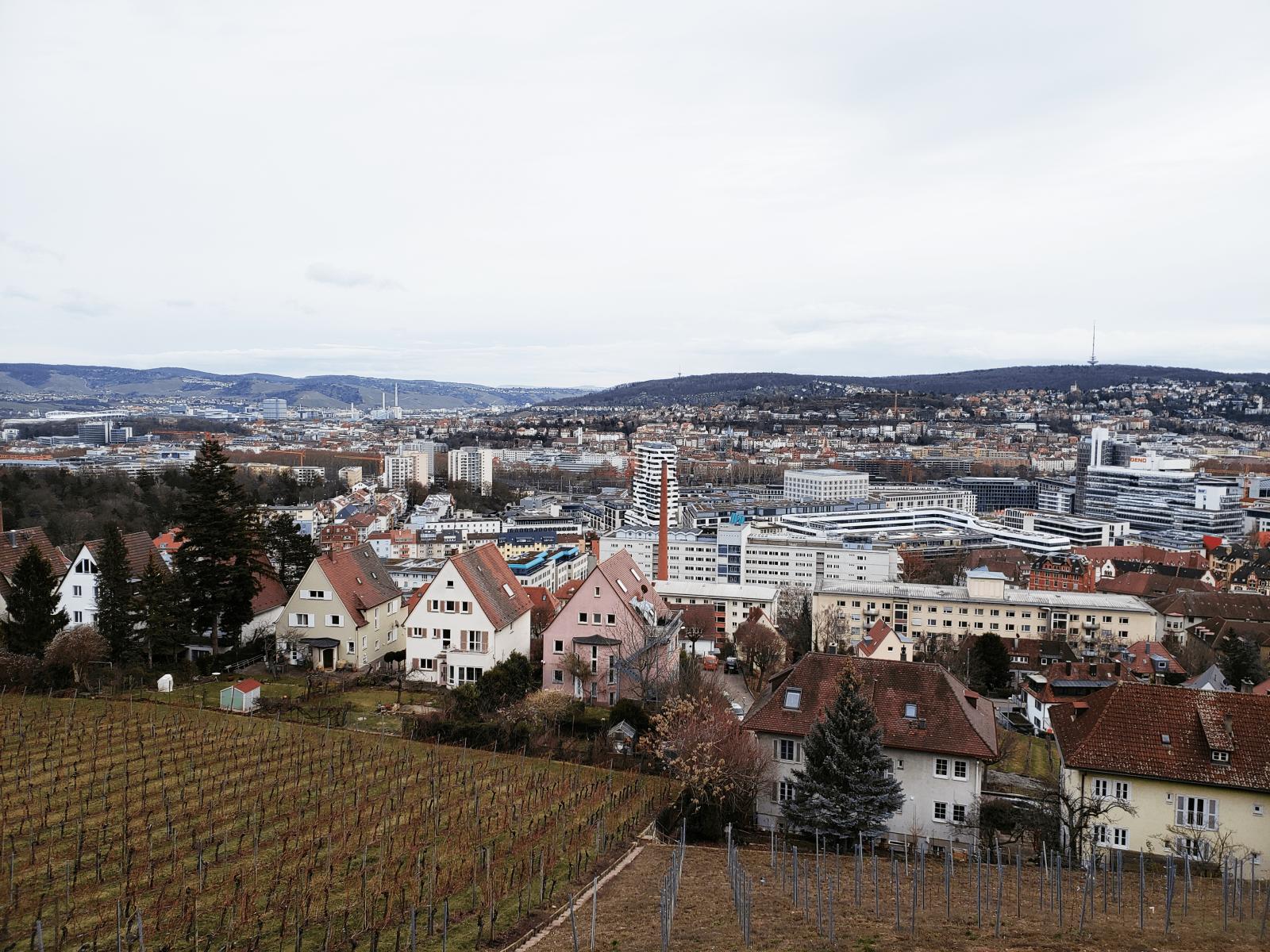
In 2019, I was fortunate to travel to and work in Stuttgart for my first co-op. While my stay was short and my experiences were by no means extensive, this is a sample of this city of vast opportunity. This article will highlight some key places to see, fun things to experience, and tips for navigating the city as a co-op student!
Places to See
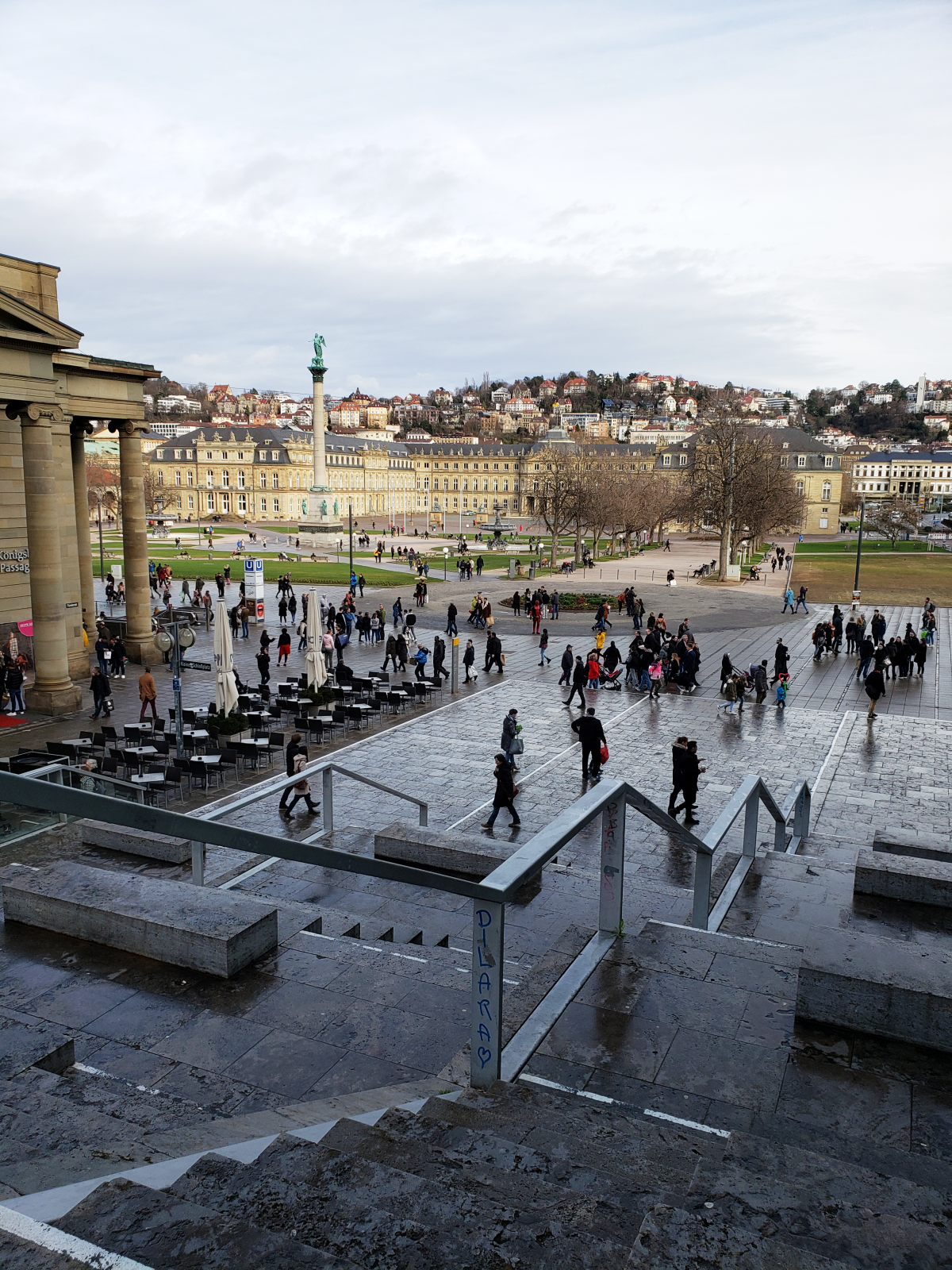
Schloßplatz (the “ß” is pronounced as “ss”) is one of the first places someone would be familiar with in the city. It is located right on Königstraße: the main street through Stuttgart’s city centre. The wide, purely pedestrian street directly leads from the main entrance of Main Station (Hauptbahnhof). It is also a main stop for almost every bus route in the city which is good to keep in mind on a night out. The square is beautifully bracketed by the “glass cube” building of the modern art museum, the New Palace that offers guided tours, and tons of shopping in the renovated historical buildings surrounding the square. I frequented this place with co-workers for lunch. Everyday, university students would sit on the steps and sketch the view.
Weißenhofsiedlung (Weissenhof Estate)
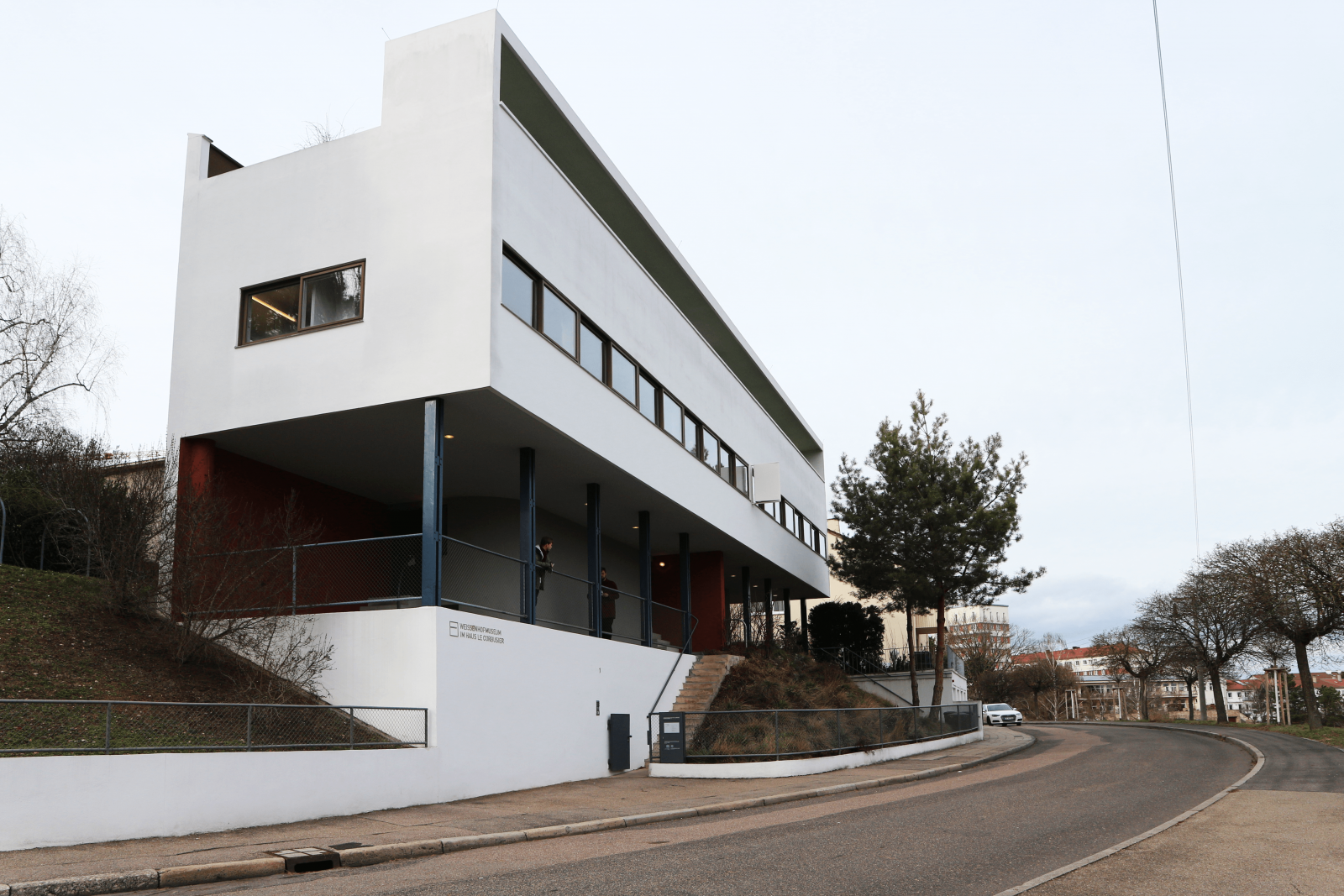
The Weissenhof Estate is a place that anyone interested in modern architecture must see. Starting in 1927, this estate was built for the Deutscher Werkbund, and headed by Mies van der Rohe himself. The different houses/complexes were designed by a myriad of famous architects including but not limited to: le Corbusier, Walter Gropius, and Peter Behrens. Le Corbusier and Pierre Jeanneret designed the building above which is the main face of the estate. This building has since been transformed into a museum. If you have never been inside of a Corbusier building before, this is your chance, because it is a complete exhibit of his design tenants: from the proportions to the horizontal windows to the rooftop garden with framed views.
Whether you love Modernist architecture or not, it is an incredibly rewarding experience to walk through the estate and formulate your own thoughts on the designs presented. For a measly €2 entry fee, it is certainly worth it. It’s also very fun to walk about the sprawling hills to see the vineyards and the fascinating way local architecture adapted to being in such close proximity to the cold white walls of the modernist estate.
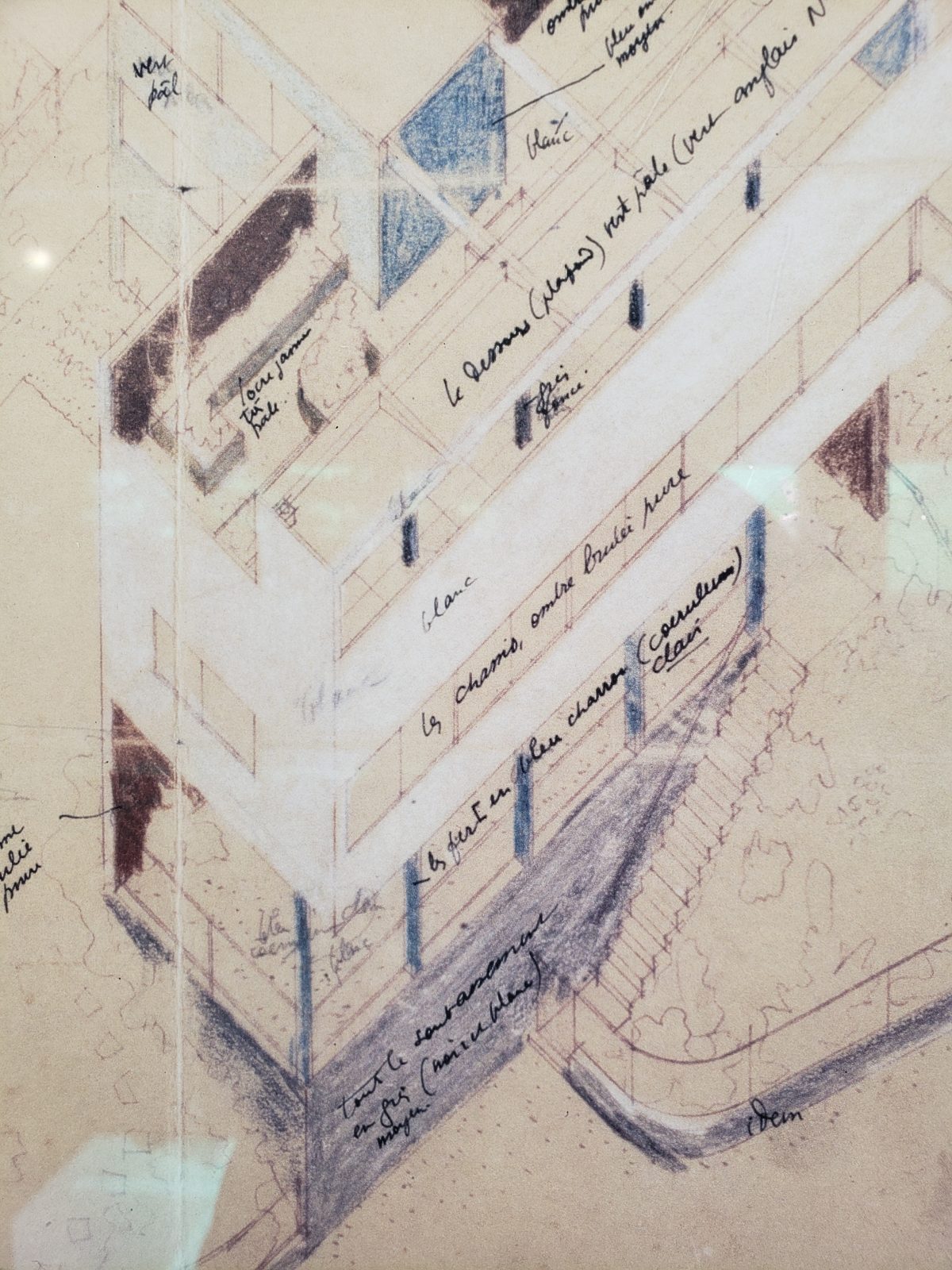
Photo of axonometric sketch on display 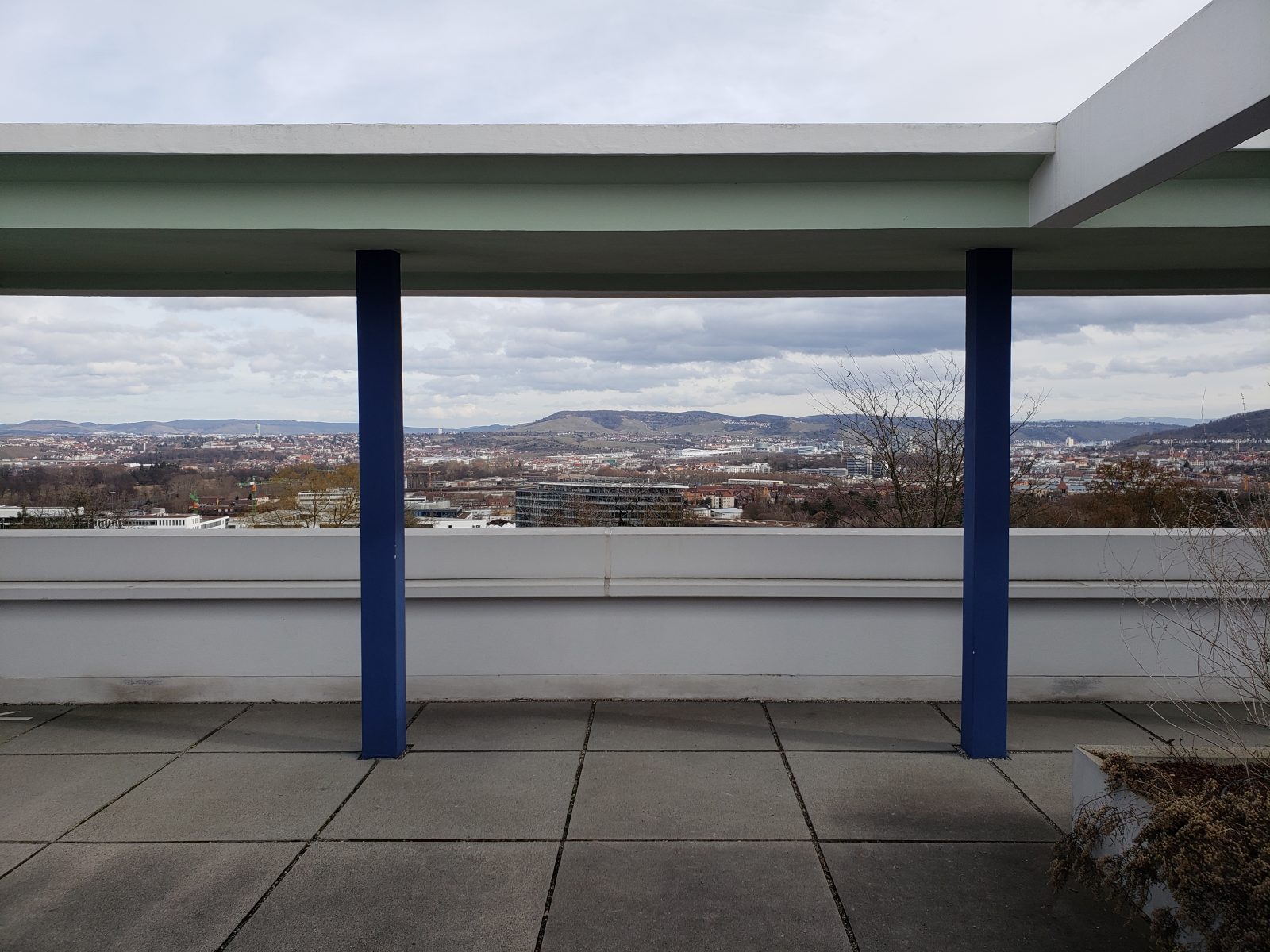
Framed views on roof garden 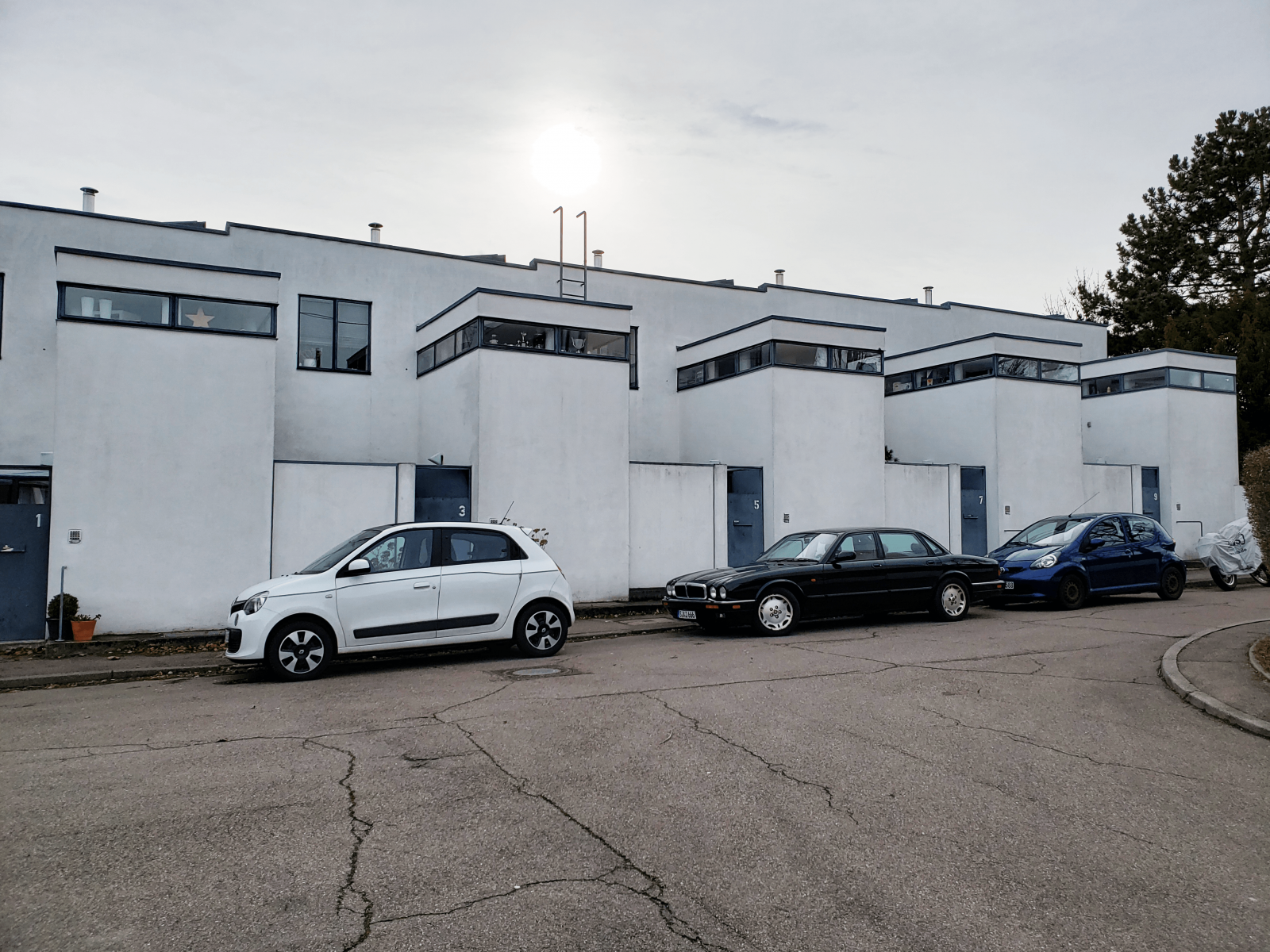
No. 5-9, J. J. P. Oud Rowhouses Front 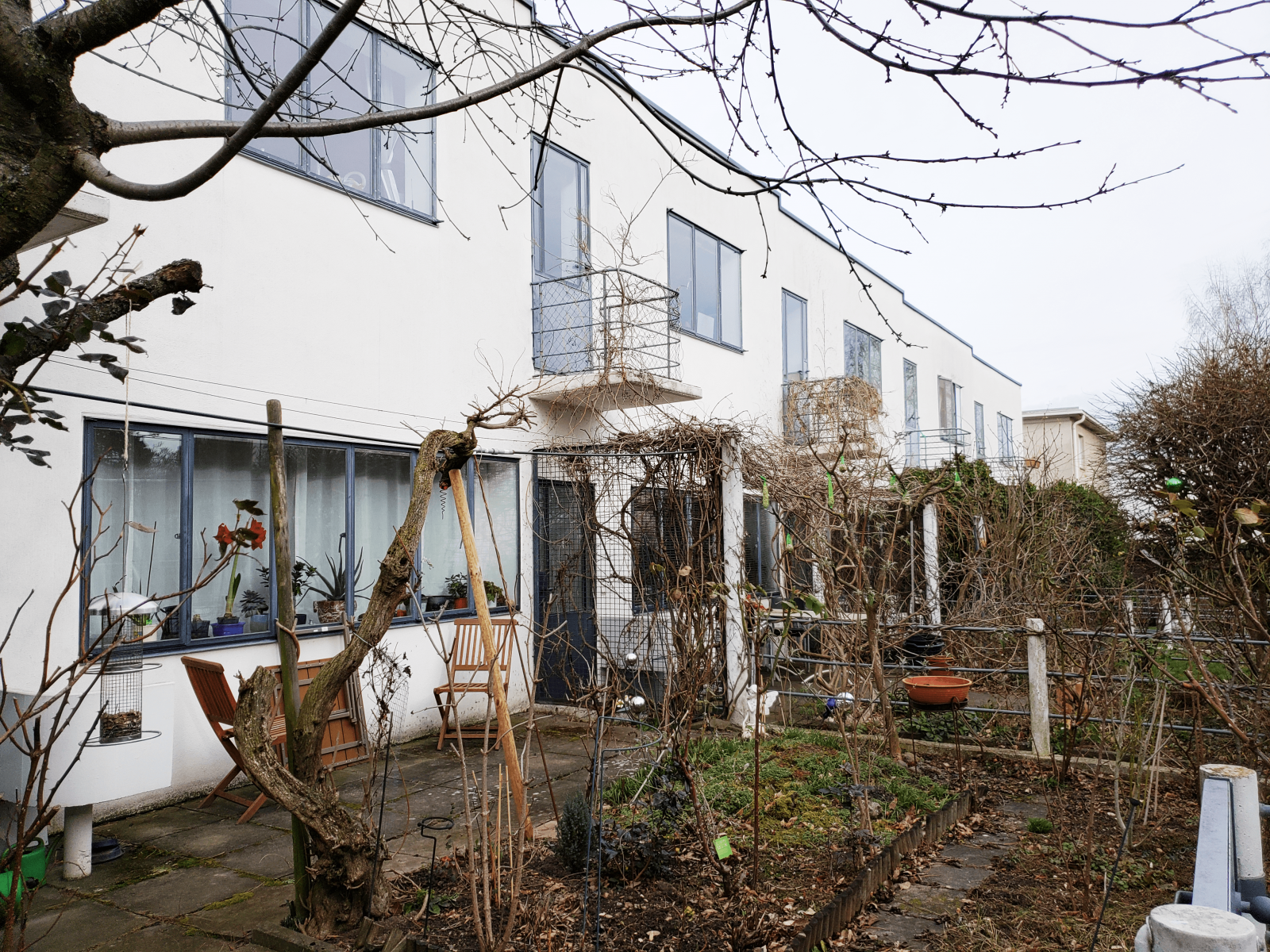
No. 5-9, J. J. P. Oud Rowhouses Back 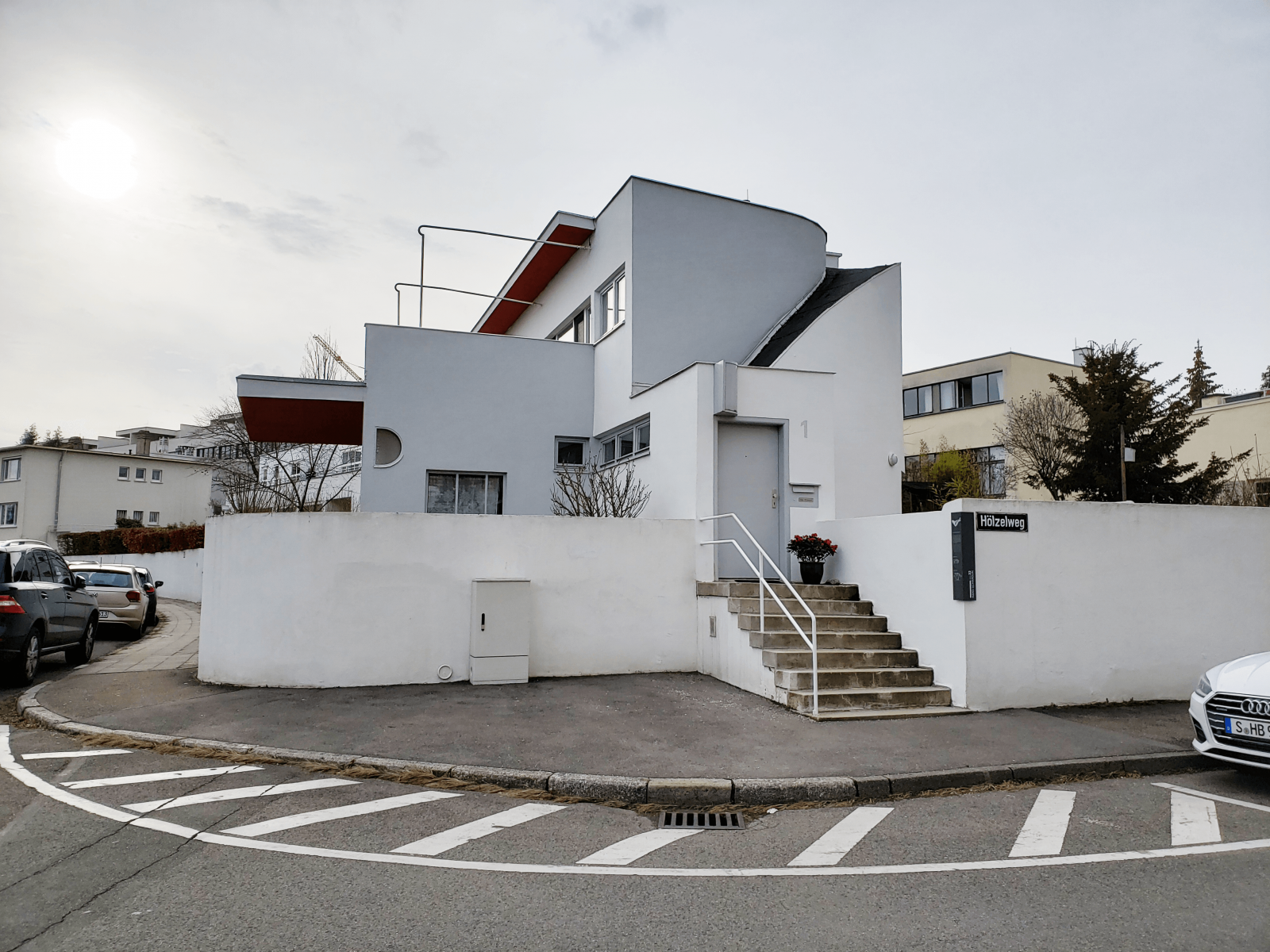
No.33, Hans Scharoun
Stadtbibliothek (Central Public Library)
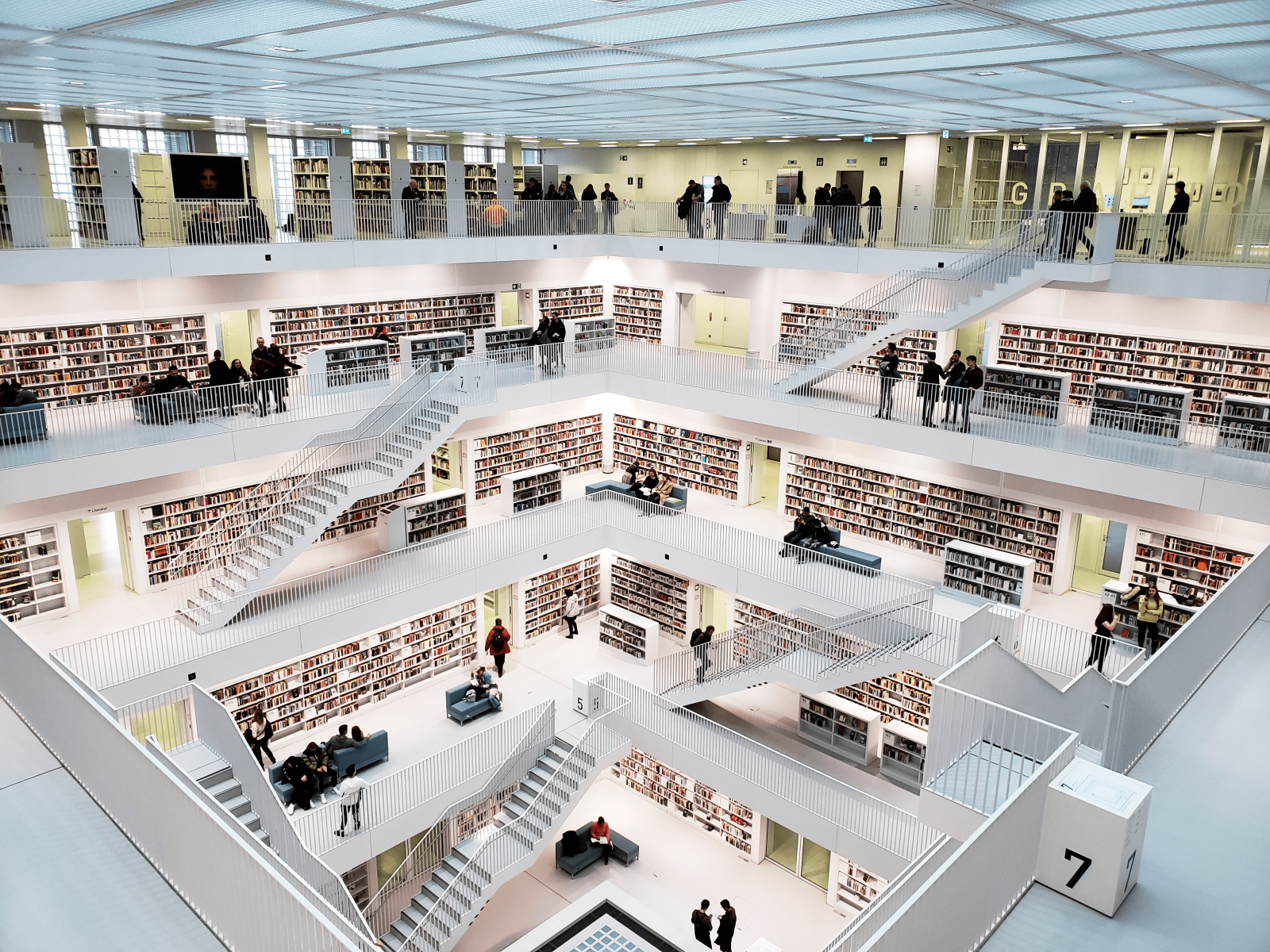
The Stadtbibliothek is another very notable piece of architecture within the city. It was designed by Eun Young Yi and first opened in 2011 to high acclaim. You can almost always find people doing impromptu photoshoots inside. Not only is this library an incredibly beautiful building, it has a good selection of English books. If you love spending time around books and minimalist design, I’m sure you’ll enjoy it as much as I did!
Mercedes-Benz Museum (or the Porsche Museum)
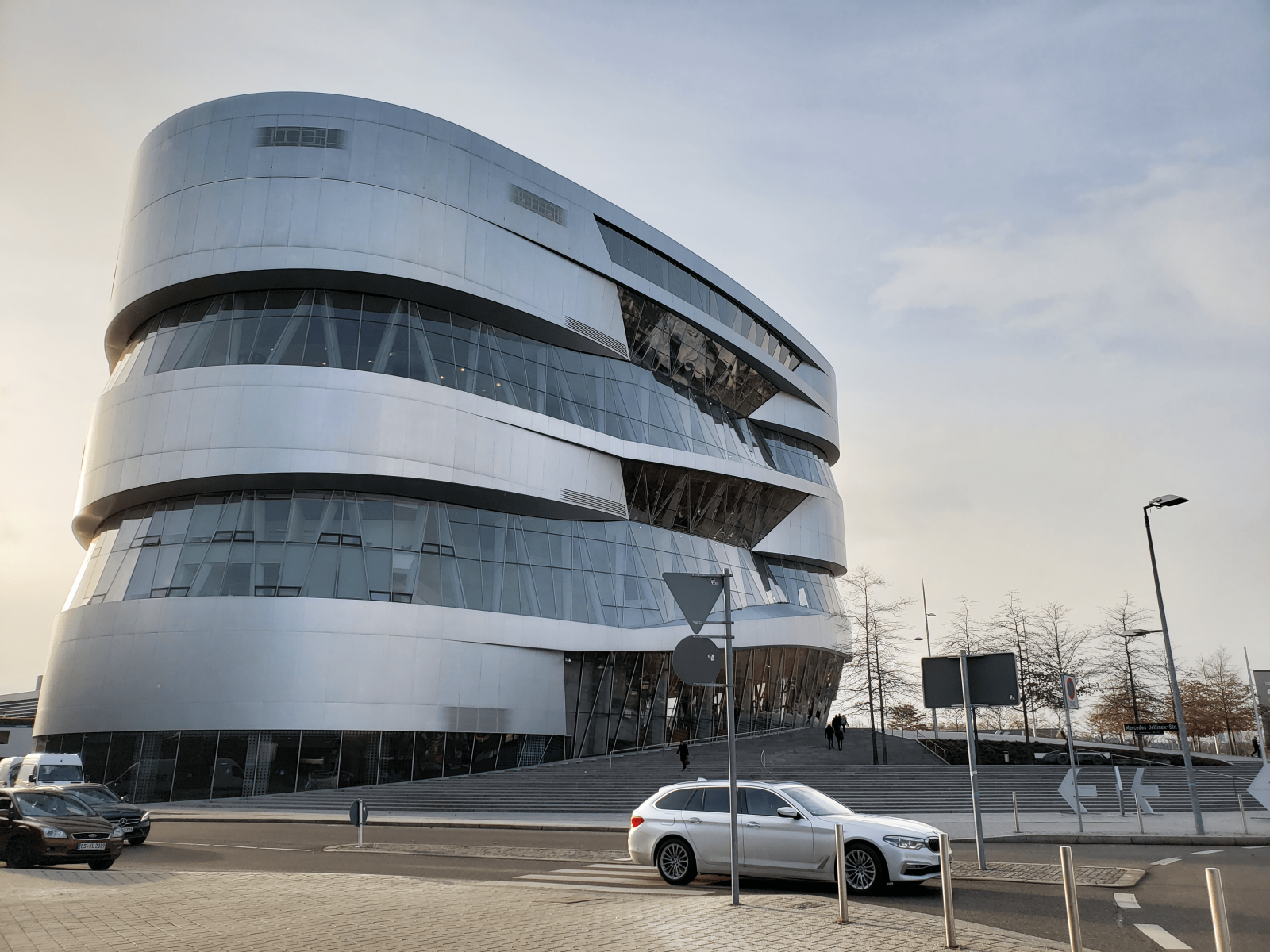
This museum was one of the first places that I visited in Stuttgart since the city is known for Mercedes-Benz and Porsche. It was designed by UN Studio and opened in 2006. It is a very fascinating museum to walk through: it has two alternate paths in a double helix beginning on the top floor, one of which takes you through the company’s history, and the other which displays special historical vehicles such as firetrucks and the pope-mobile. I loved the architecture and the staging of this museum, especially the small footpaths that connected the two alternate routes which felt like discovering branches on a trail.
Universität Stuttgart Campus Vaihingen
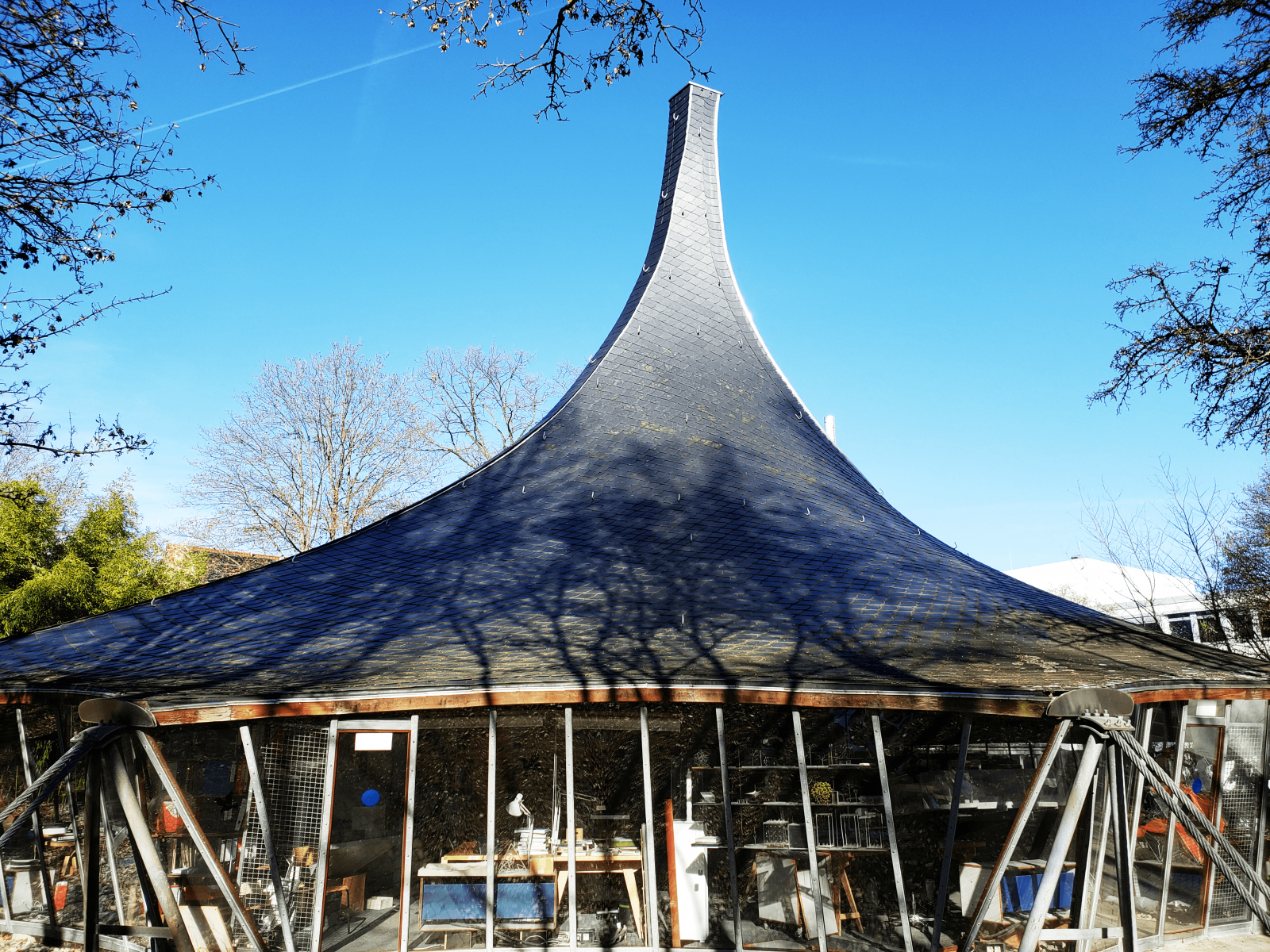
As the heading suggests, this is the Vaihingen campus of the University of Stuttgart. Stuttgart has many universities, and 4 different schools of architecture, so this suggestion might come as a surprise. It takes a bit of a trek (and extra charge for your subway ticket) to get to this campus, but it is a beautiful showcase of architecture. I was lucky enough to have someone who lives close to the campus to give me a tour. The oldest dorms were designed based on courtyard architecture from Italy despite its drastic difference in climate. The media building is surrounded by cool graphics and sculptures. As well, the area around the university is very peaceful and gives off a completely different impression of the meaning of “suburban” that what we see in North America.
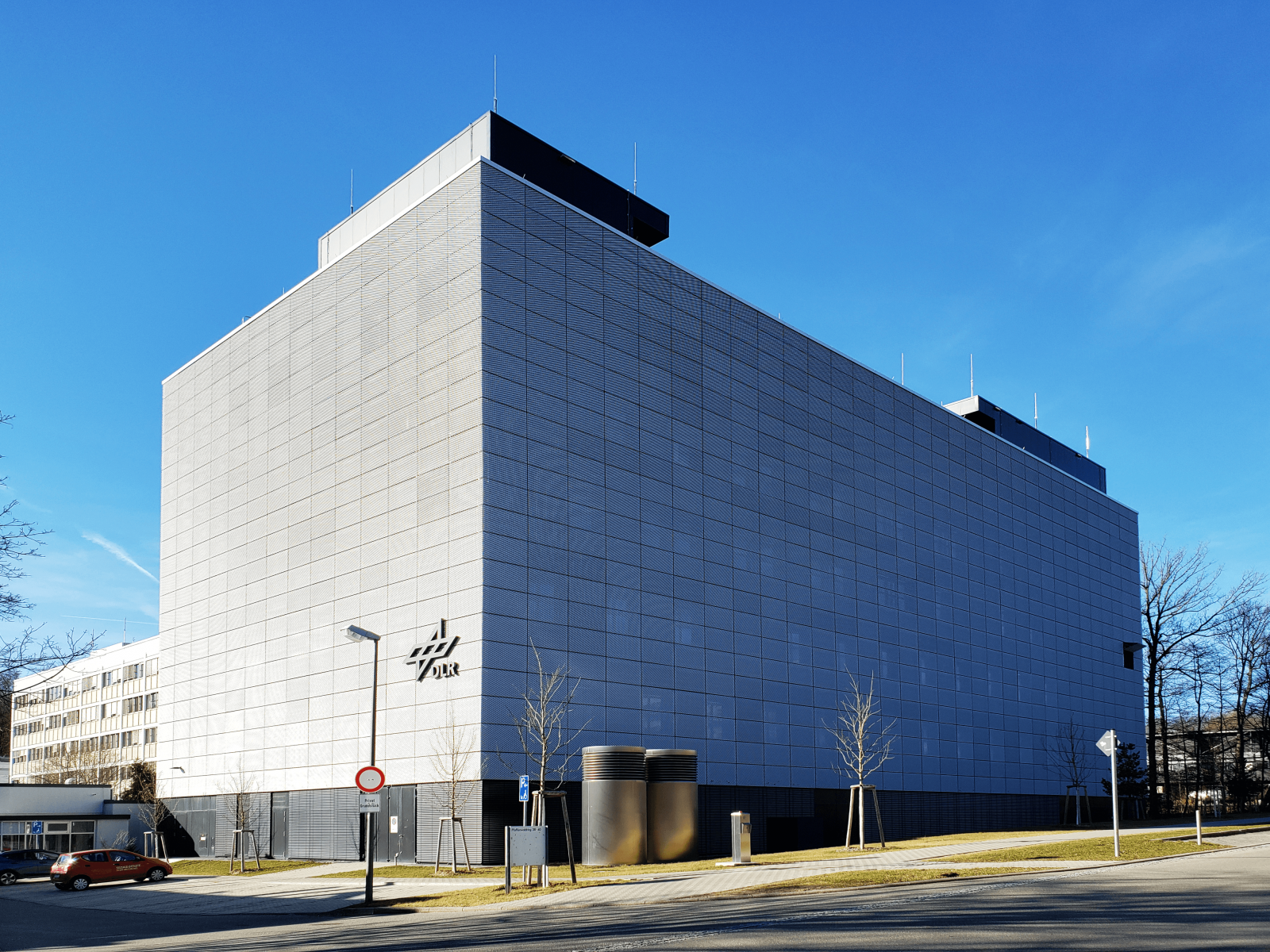
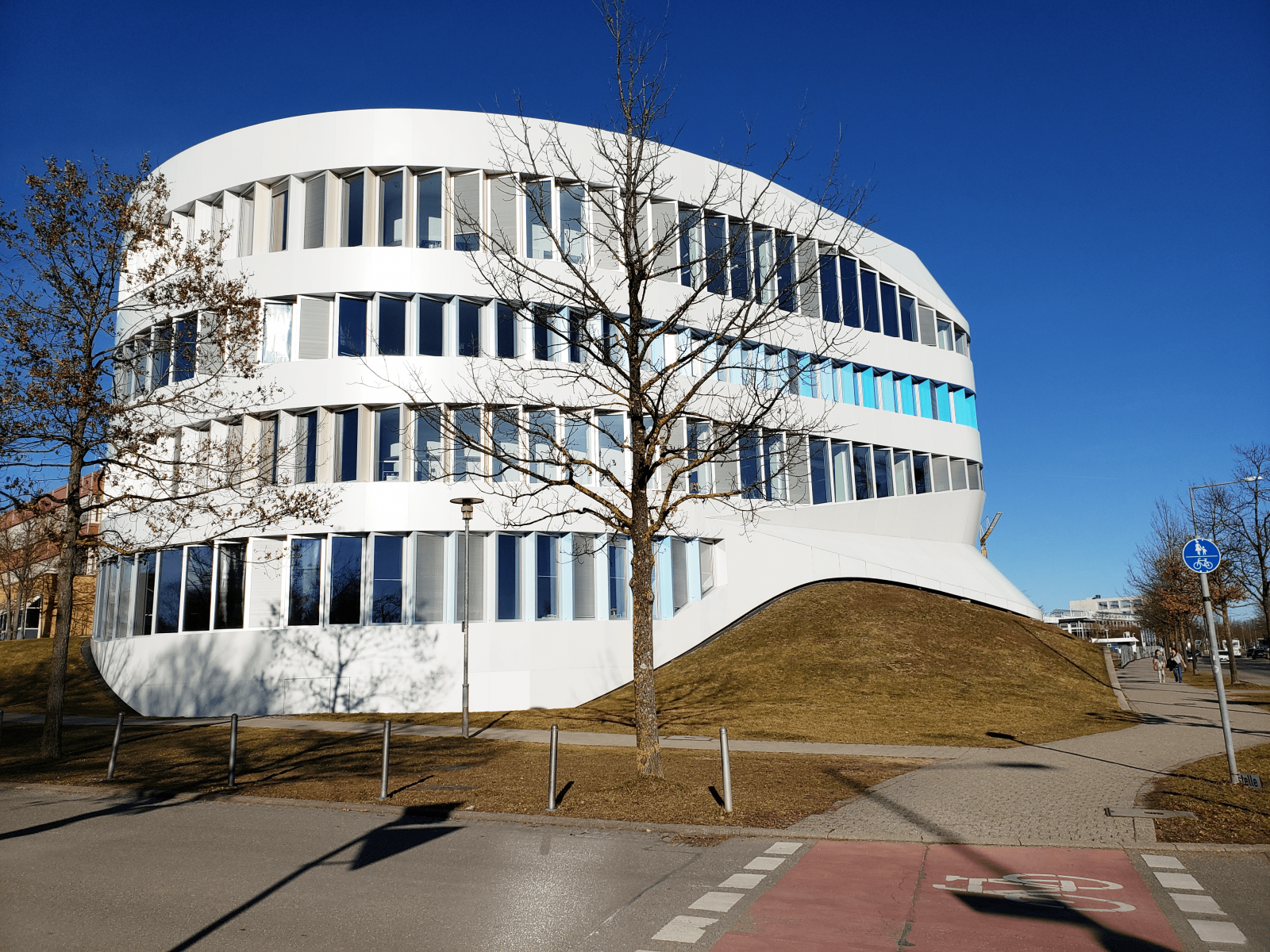
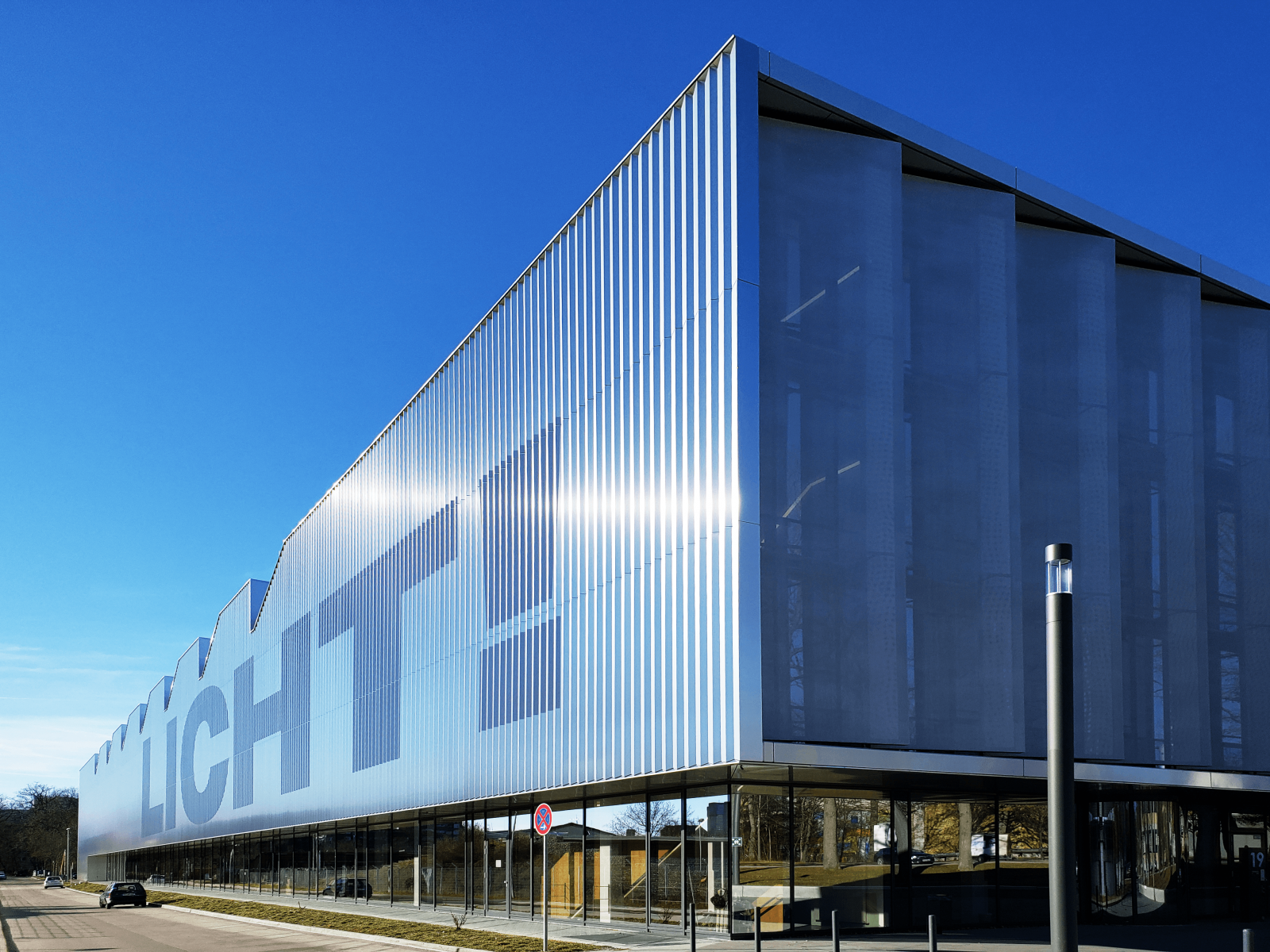
Automotive Factory 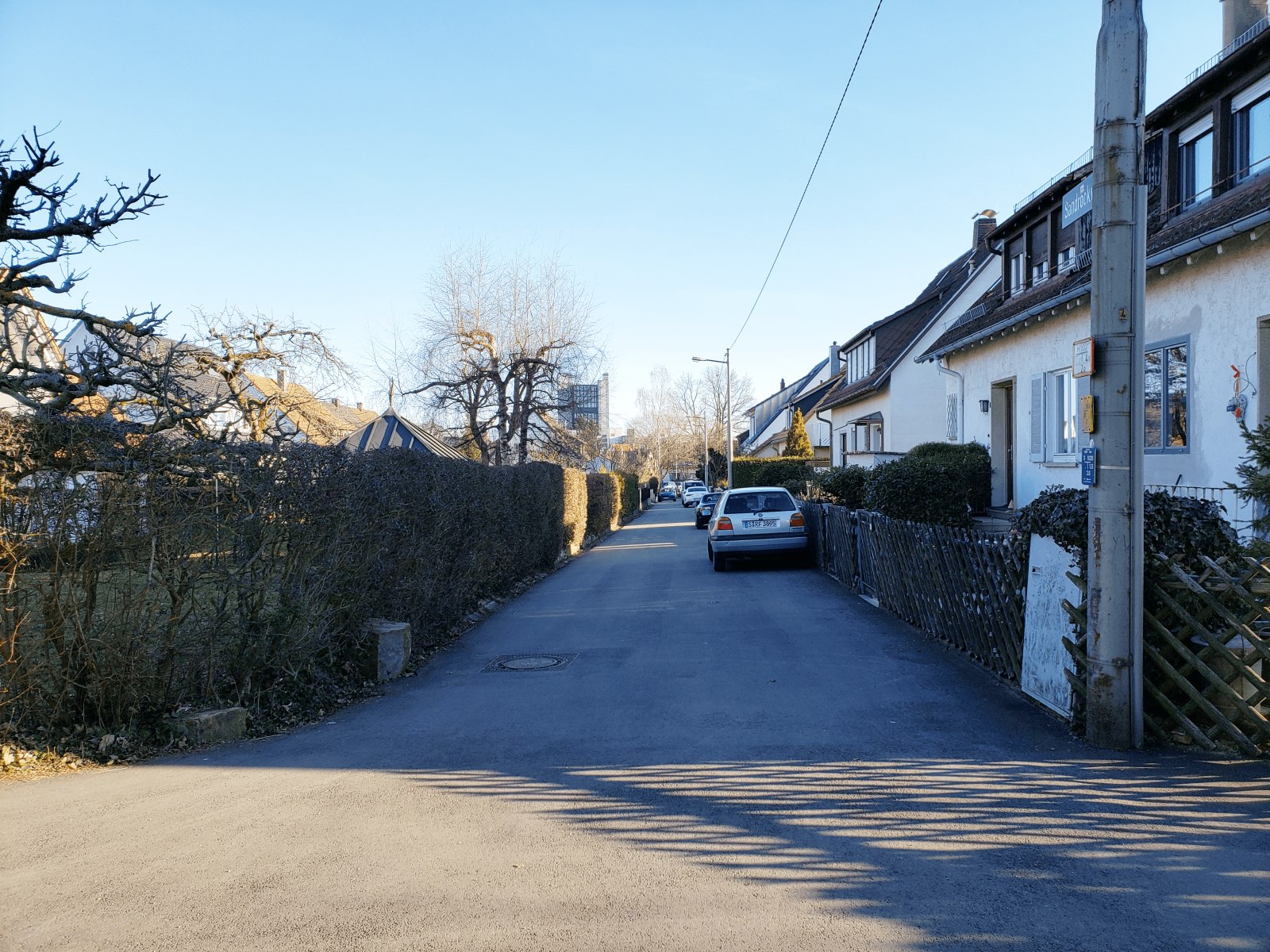
View of neighbourhood
For stores, check out Deco Maier and Fachbuchhandlung Karl Krämer, an architecture supplies store, and a bookstore that primarily sells architecture books.
And of course, you should walk around the parks and get lost in the city! Everything is close and convenient: you can travel easily by bus, tram, or subway anywhere. Here are a few other places I’ve explored:
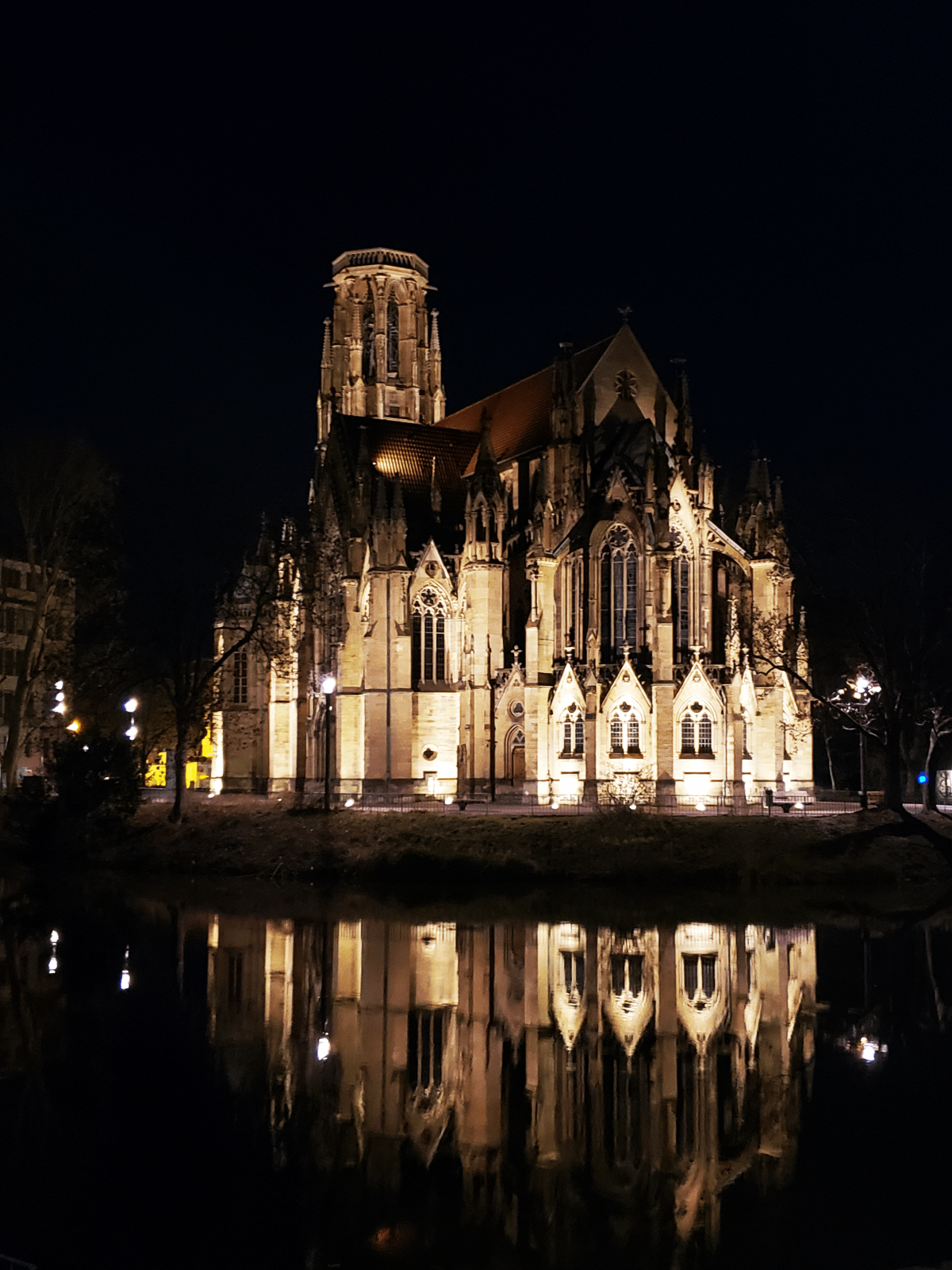
Johanneskirche am Feuersee 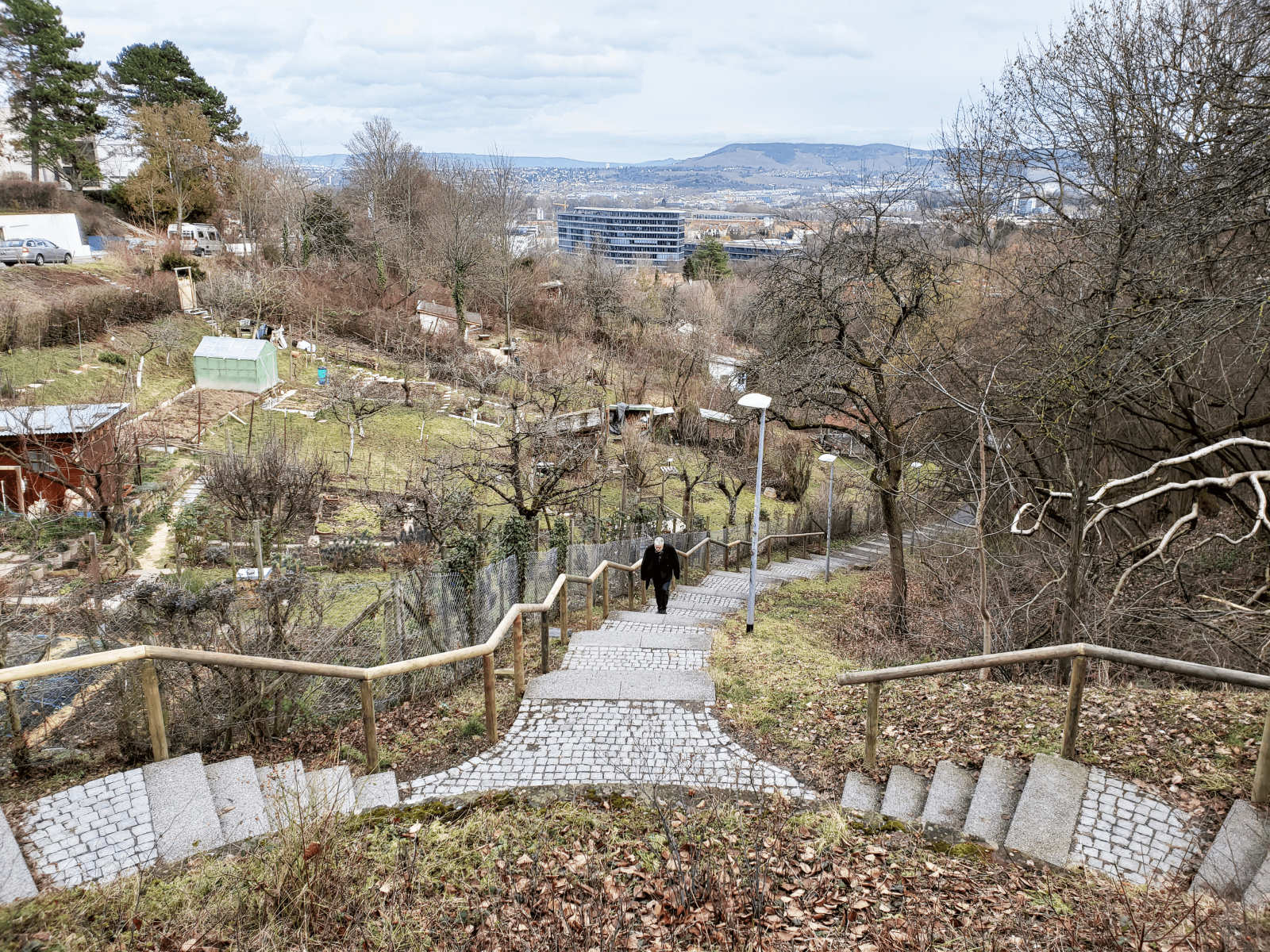
Trail in Killesberg neighbourhood 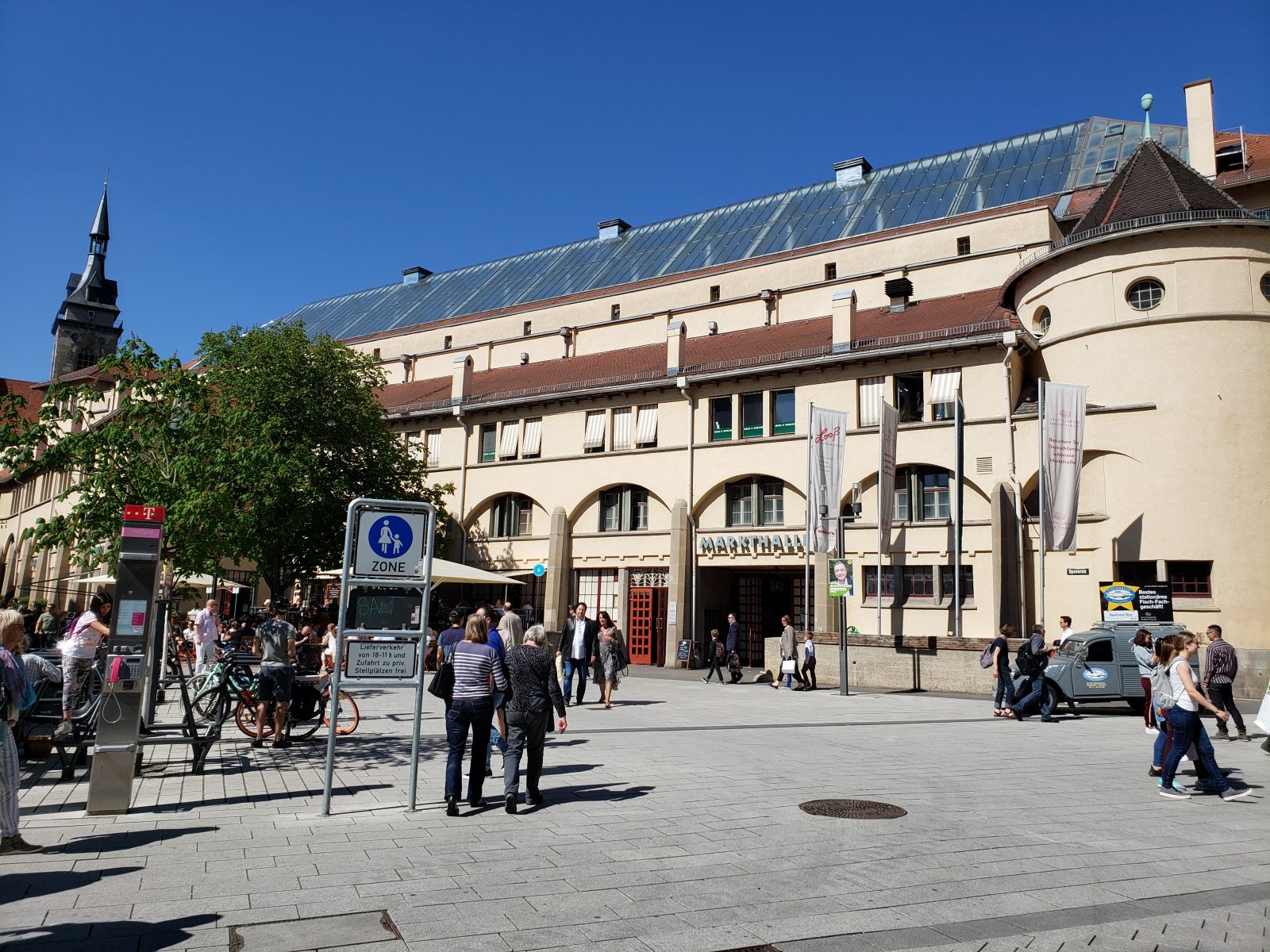
Markthalle Stuttgart
Things to Do
This will depend a lot on your own interests, but here are a few big, general suggestions!
Die Lange Nacht der Museen (The Long Night of Museums)
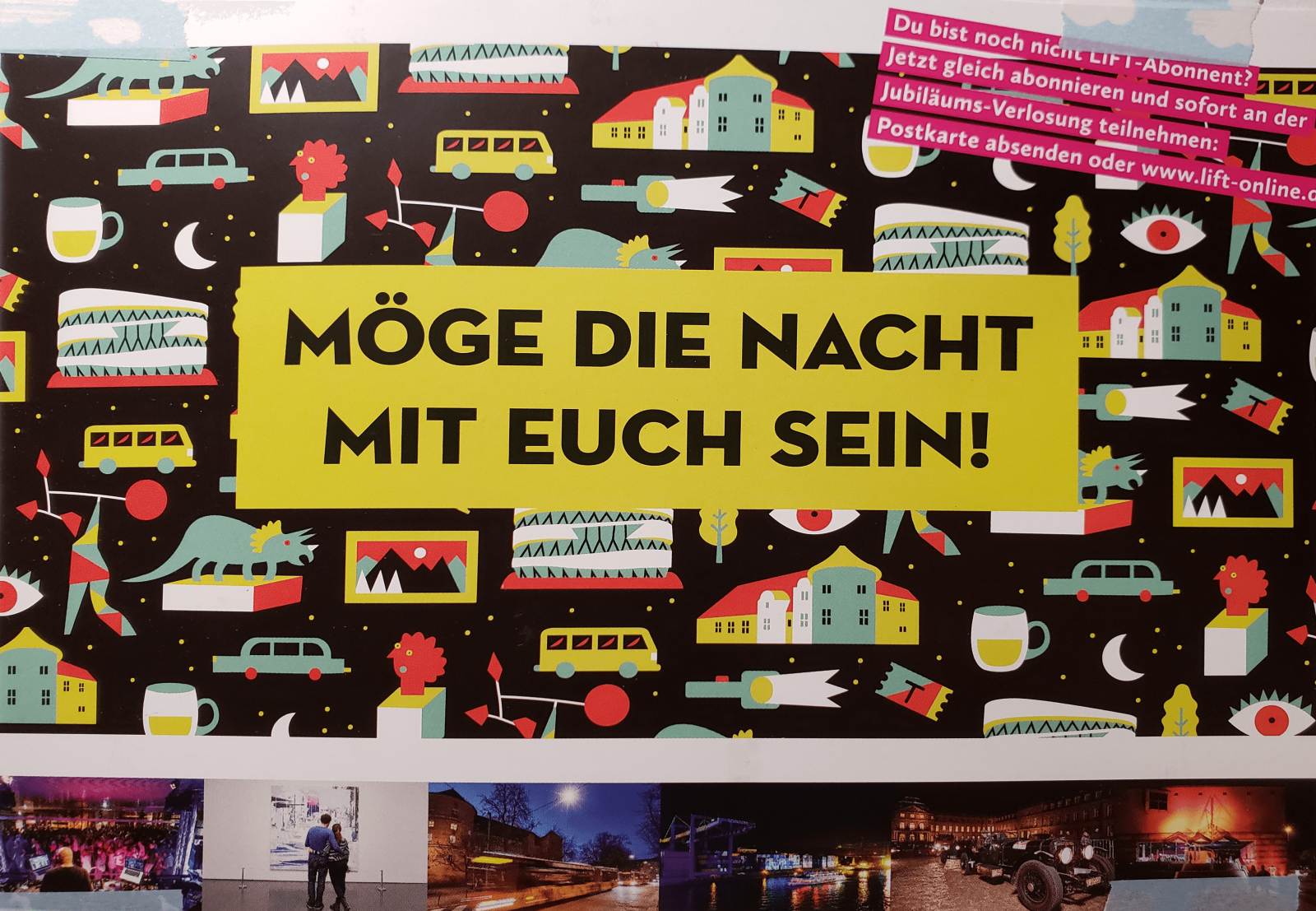
This is an annual event where for about €20, you can enter any museum in all of Stuttgart for a whole night! It’s a great way to spend a night with friends and browse places you might not think of, but it’s highly unlikely you’ll be able to get to all of them. Either way, it’s a fun event in the middle of March and a chance to explore the city.
Exhibitions at the Liederhalle (Concert Hall)
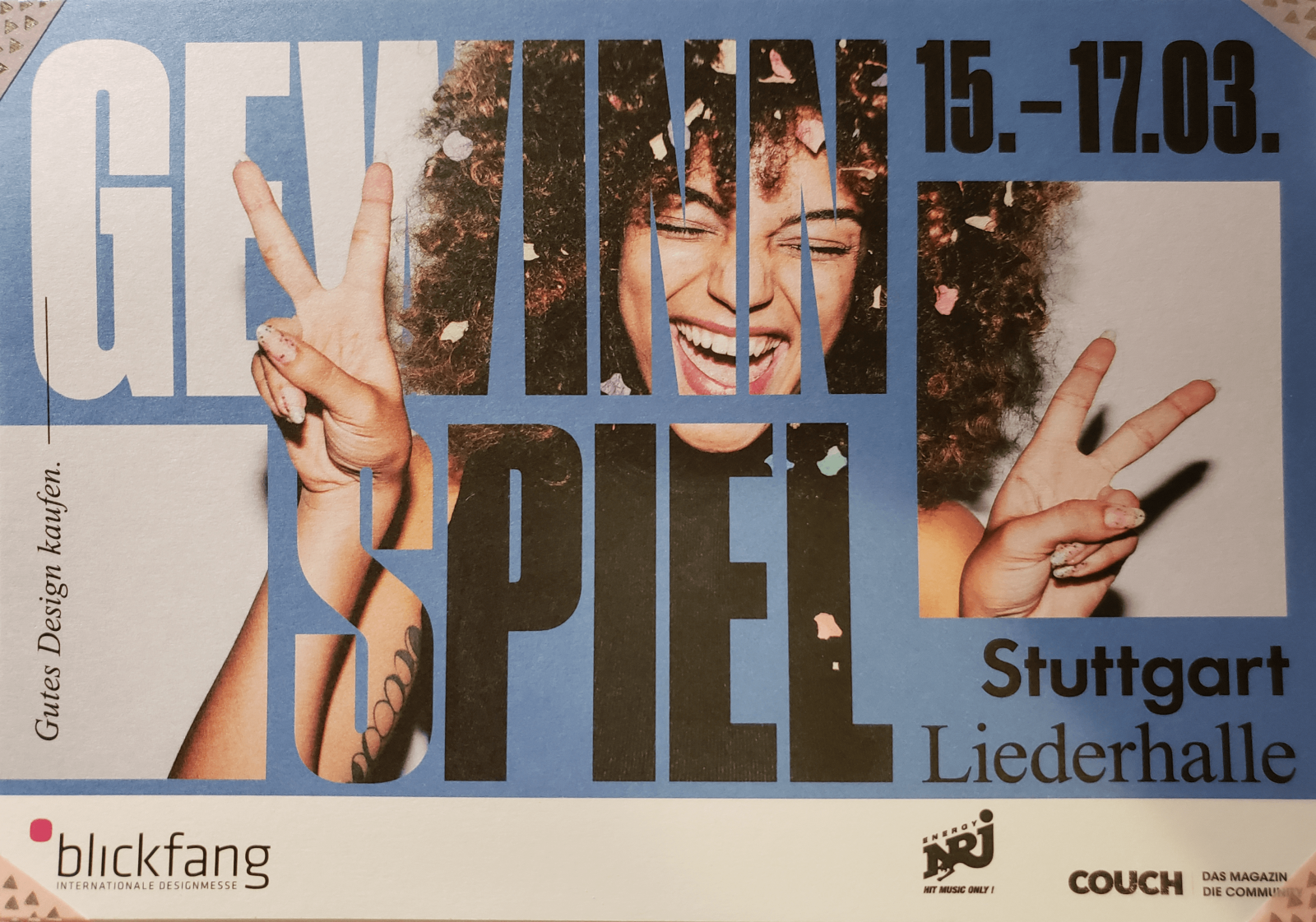
There are always traveling exhibitions that come to Stuttgart, but a notable one that I went to was Blickfang. This exhibition is an annual fair for design that exhibits physical crafts such as paintings, textiles, furniture. I enjoyed talking to various designers from all over Europe about their work. There is also a wide selection of design books and stuff to buy if you are willing to spend some (or a lot of) money. I didn’t buy anything and you wouldn’t need to to have fun. You do have to pay an entrance fee, but if you’re on co-op, you might be able to get a free ticket from your firm like I did!
Stuttgart Spring Festival/Cannstatter Volksfest in the Fall
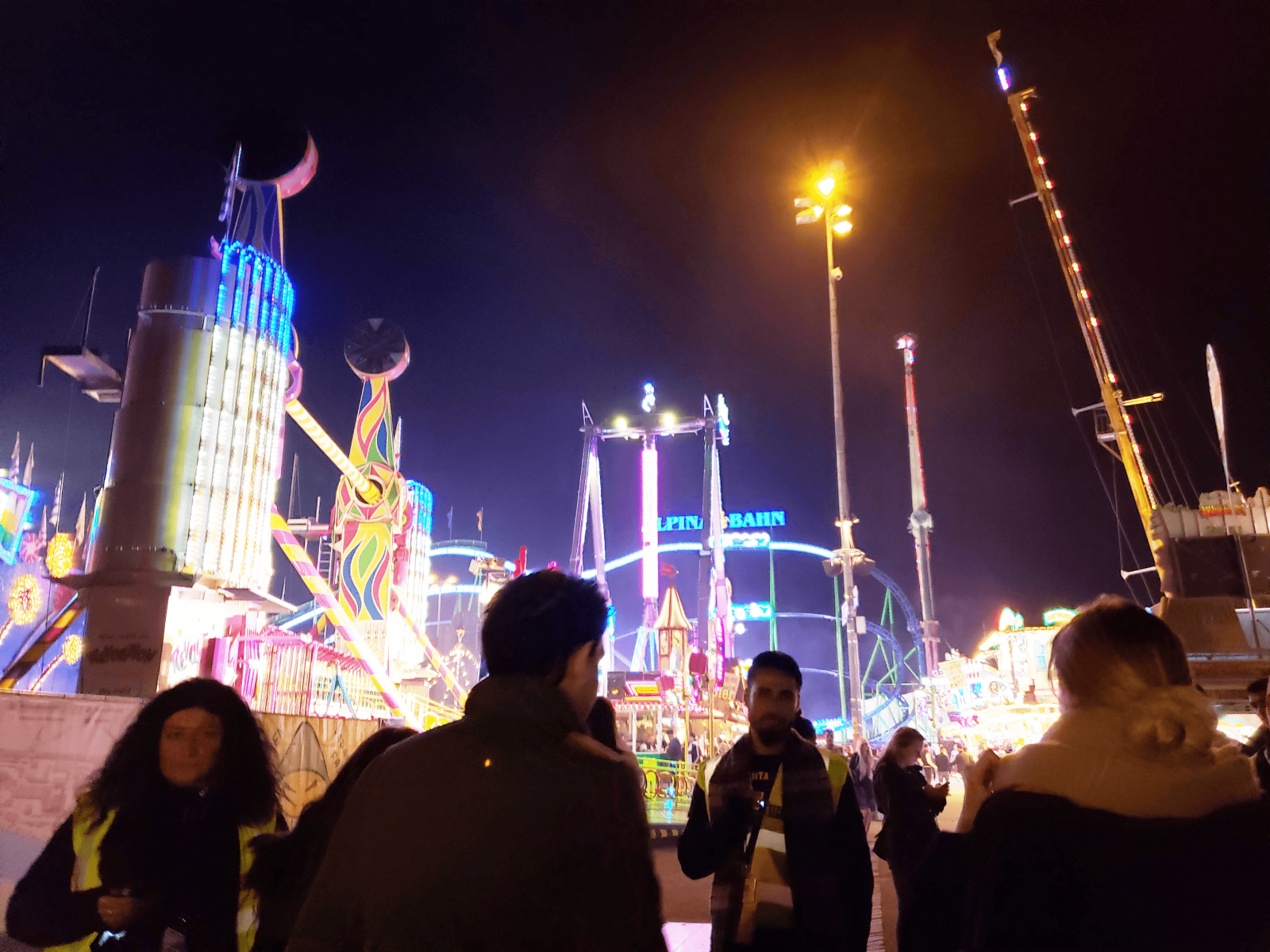
If you’ve ever wanted to wear a dirndl or lederhosen out in public with zero judgement, this is your chance! Every year, there are two big festivals in Stuttgart: the Spring Festival, and the Fall Festival. They both take place in Bad Cannstatt which is across the Neckar River, but easy to reach by tram. The Fall Festival is larger (and is often compared to Oktoberfest in Munich) but the Spring Festival is also exciting. It is basically a carnival: it has some small temporary rides, street food, and LOTS of beer tents. Whether you drink beer or not, visiting a German beer festival is a unique experience that is definitely worth having.
Food and Drink
Ochs’n Willi
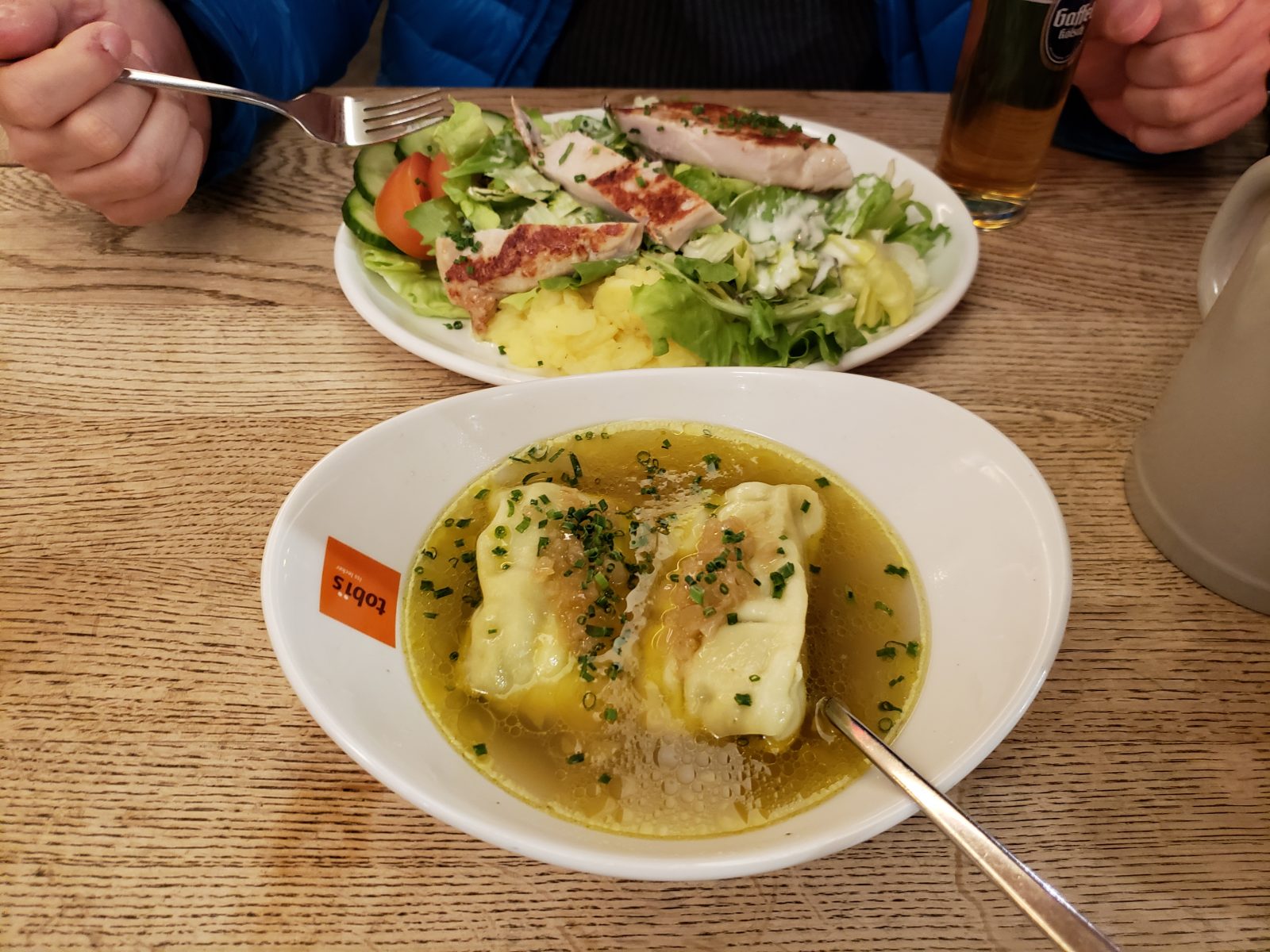
A casual restaurant full of German food and flair. It is highly accessible since it is right on the side of Schloßplatz. It serves Swabian and Bavarian food. This was my first time trying Maultaschen which is a staple of Swabia. You can see that there are only 2 maultaschen in the bowl, and that’s because it’s incredibly hearty and filling; it is also delicious!
Café Galao
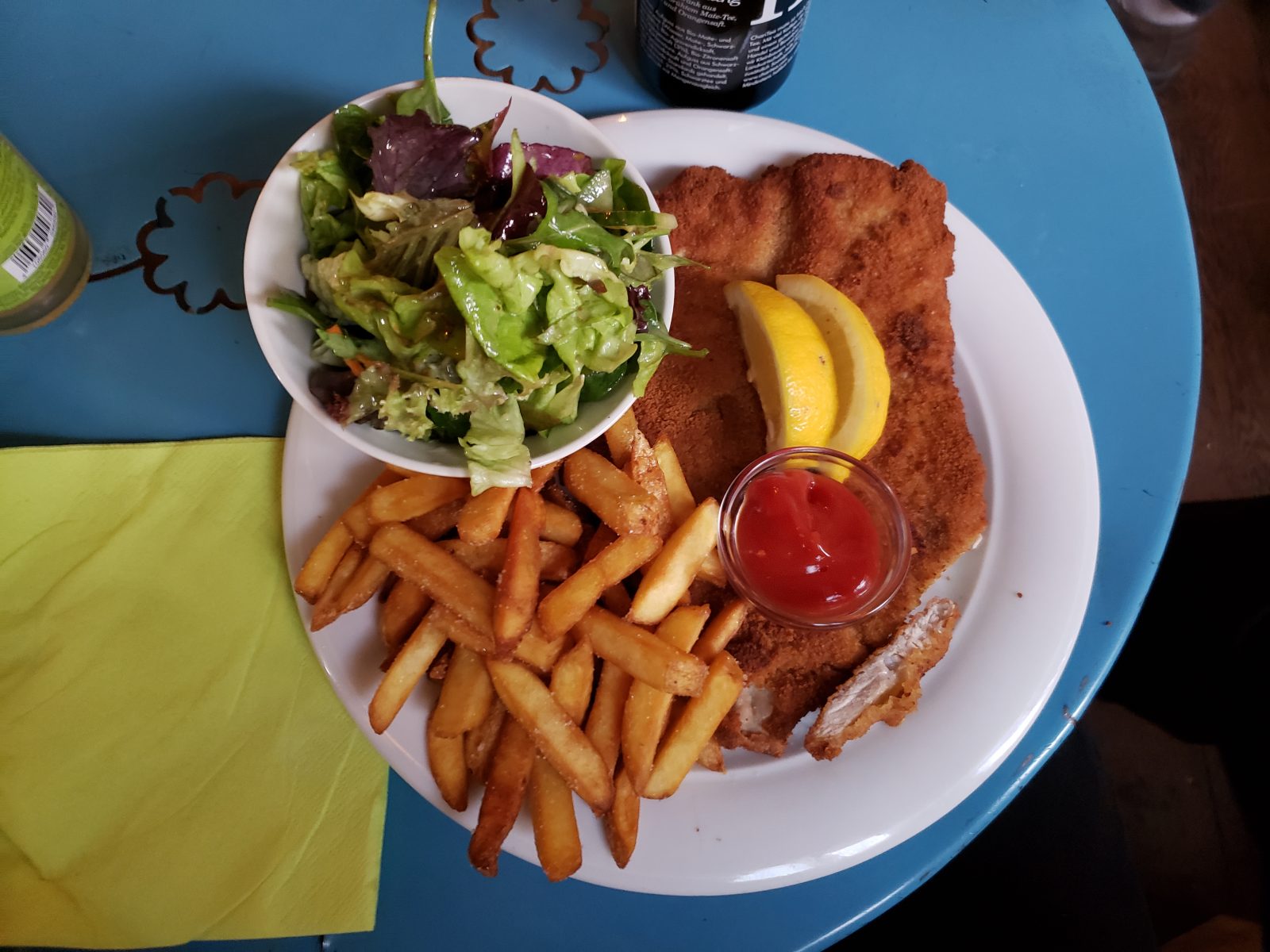
This café is located right next to Marienplatz, at the centre of the hipster area of Stuttgart. Every Friday or Saturday, the owner hires a different small band to play. These bands come from all over Europe! He’s very well connected to the indie music scene and is always looking for new talent to bring in. I’ve discovered a few cool bands from this, and even got to talk with some of them.
Biddy Early’s Irish Pub
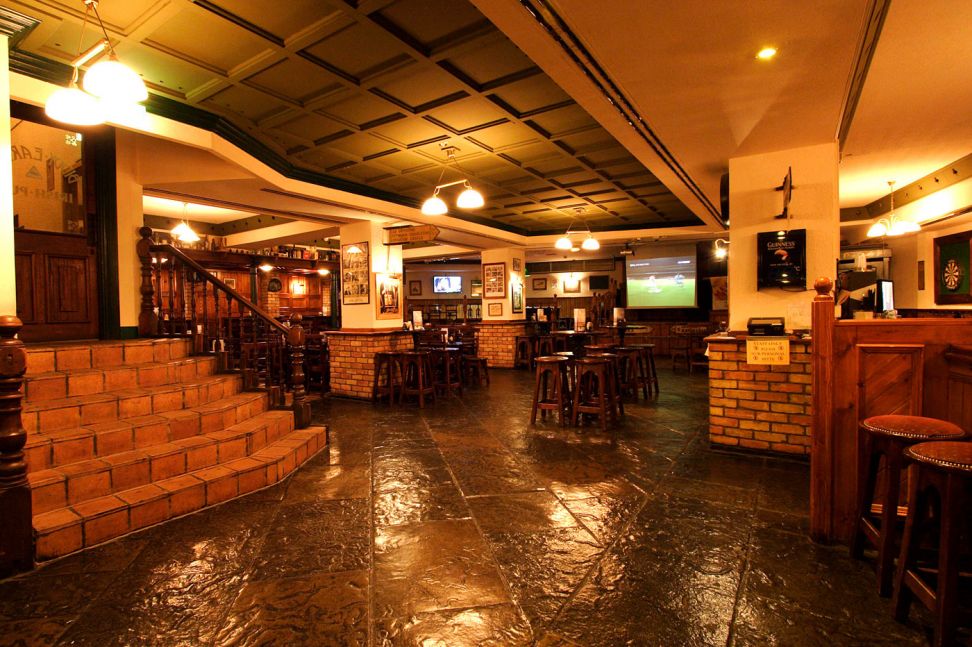
This Irish pub is incredibly well known in the area, and a great place to go with co-workers and friends. Every week has at least one karaoke night, and on the weekends, they often invite live bands to perform. The prices are quite fair, and like most places in Germany, they offer giant pitchers of beer. Seeing how polite people are in the streets, it’s surprising how much fun the people of Stuttgart have when in the presence of friends. I even got to sing karaoke on stage with my co-workers. All in all, this is a great social spot that everyone knows!
Jungenhaus Mitte
This one isn’t only a restaurant, and unfortunately I don’t have a picture of it. It is a youth centre with courses and workshops. I visited this place with my co-workers for lunch because they always serve cheap and healthy food that tastes great. They even tell you every week’s menu on their website.
Tips for Future Travelers or Co-op Students
Alright, time for some tips on what to do if you’re going to Stuttgart!
- Make sure to leave a few days before your co-op begins because there is a LOT of red-tape when it comes to staying in Germany. In terms of documents, you need to do things in order: Sign your rental contract, go to the city office (Rathaus) for residency registration, get a bank account, then finalize your profile for co-op. You need your rental contract to get residency. Then you need residency to get a bank account. And then you need a bank account to get paid. Phew, that’s a lot!
- Once you are registered as a resident living in Stuttgart, you will receive a letter in the mail asking you to pay the radio tax. This applies only to every household. That means that if you live under a landlord, there’s a good chance that they are already paying it. So you just have to go online and let the German government know or else they WILL find you and make you pay for it!
- Get a prepaid sim card at your local grocery store, and make sure to either get someone to help you translate or go to a store to ask for help because the instructions are mostly in German.
- Get a monthly transit pass if you plan on using transit (which you most likely will be). You have to do this at the Hauptbahnhof (main station) and you’ll need your passport and residency registration form. They determine the range of your typical travel and use that to find how much you must pay each month. It’s a pain, but easier than buying 4-way tickets at the machines that only use German.
- If you DO choose to buy physical tickets, keep in mind that trams have the ticket stamping on-board, while subway trains have the ticket stamping on the station platforms.
- Recycling is a pretty big deal in Germany so here’s how to do it. The garbage is still garbage and the compost is still compost. This is where it gets tricky: paper and plastic recycling goes into the “Gelber Sack” or “yellow bag” that you get for free when you ask grocery store cashiers. Glass recycling goes into bins in every neighbourhood and you have to separate it by colour (ie. green, brown, and clear/white glass). Plastic bottles and cans can be recycled at grocery stores to get money back.
- Download Google Maps of the city and check all of the transit routes. The German transit system’s reputation is completely true. I have never experienced the bus or any form of transit being late (the latest I ever saw was about 5 minutes).
- Download a ticket app for your cellphone. I used “goEuro” which has now become “Omio”. It was a lifesaver to me when traveling. Buying tickets from main station is very difficult especially in English, and with this app you can easily compare prices and times.
- The university cafeteria is always open to anybody and is a cheap and quick option if you never need it!
- Last but not least, there are also English lectures for the architecture graduate students at the University of Stuttgart. I ended up learning a lot about the awesome robot-fabricated parametrically designed pavilions that the graduate students build every year!


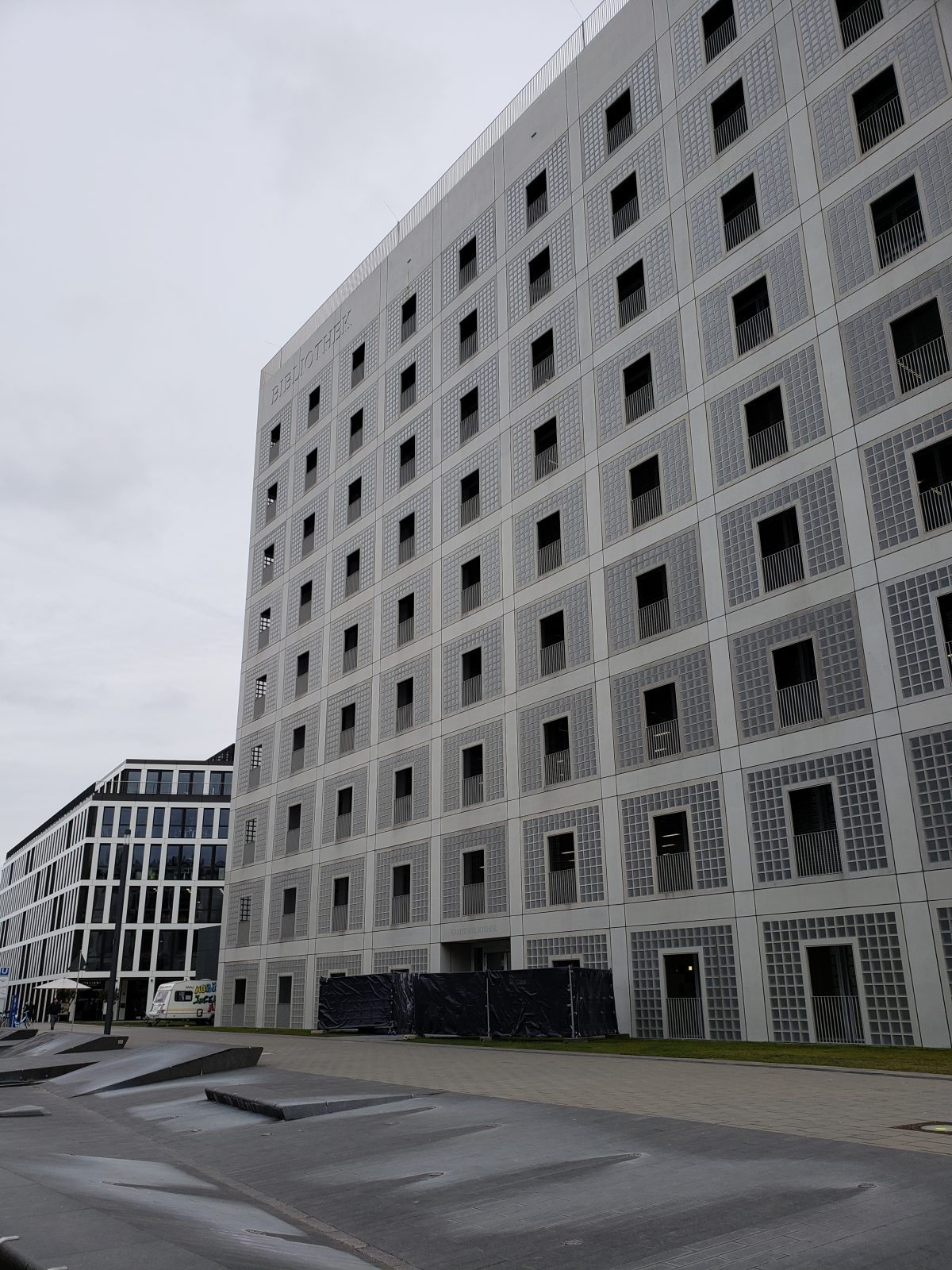
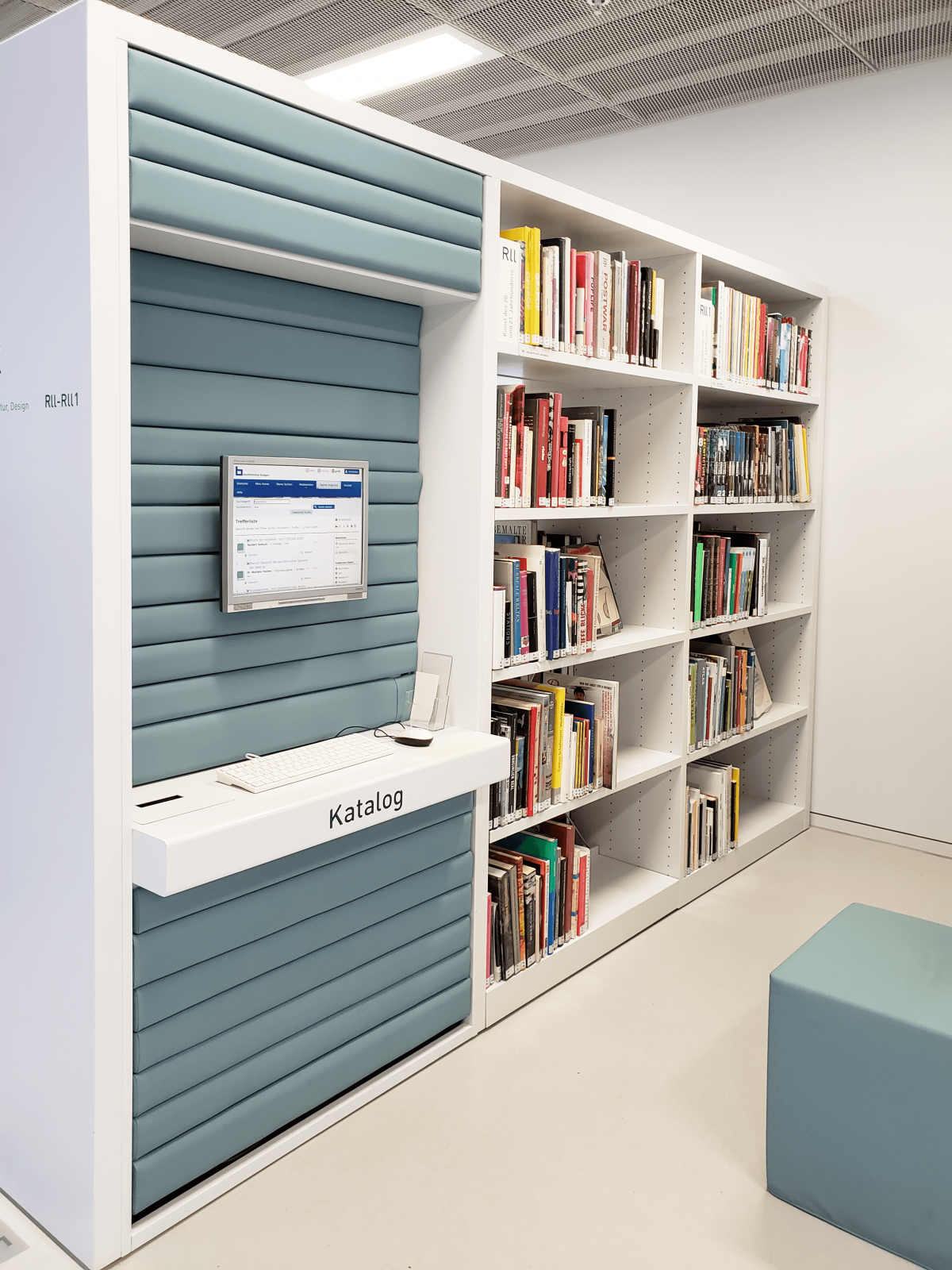
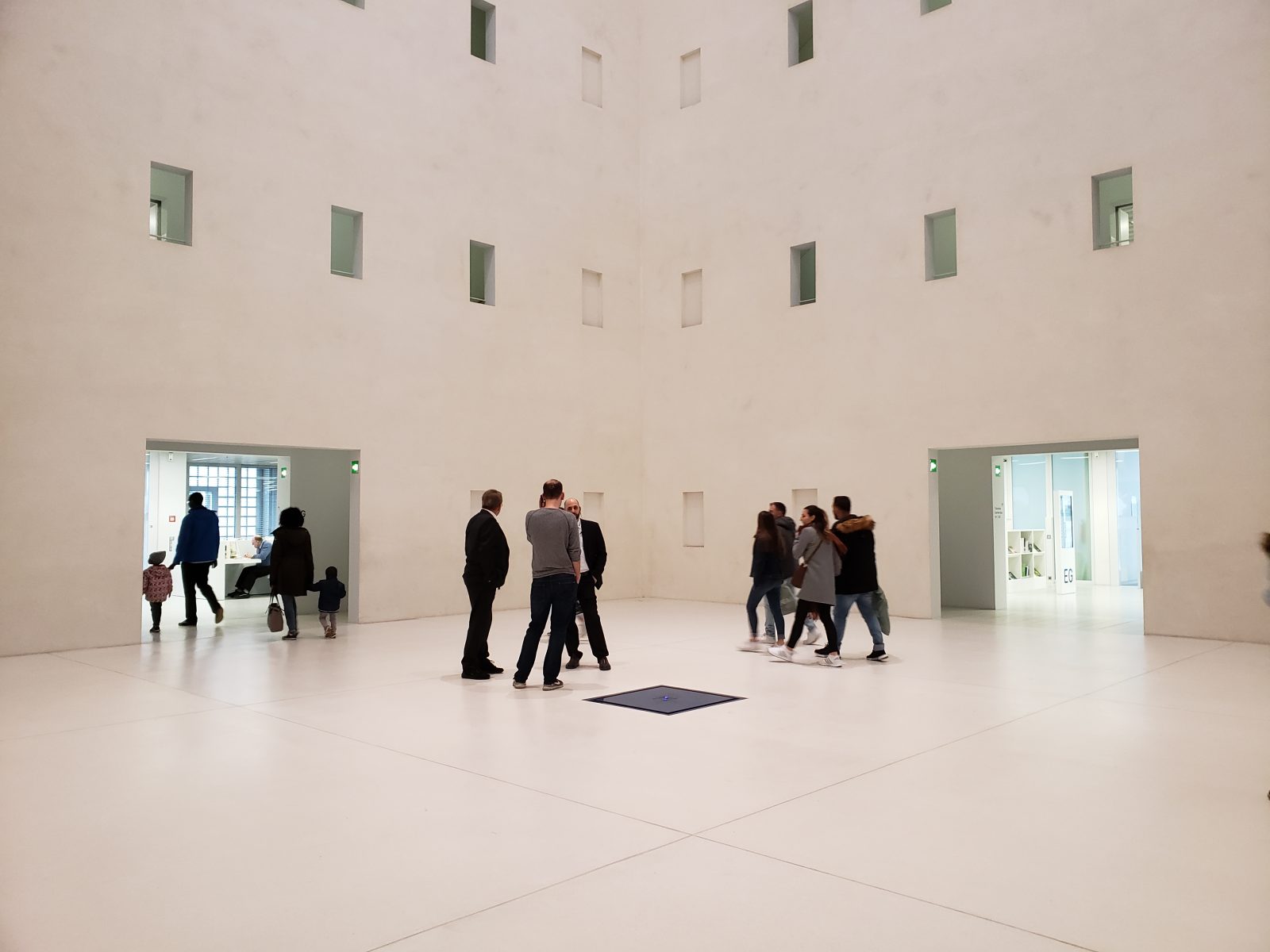
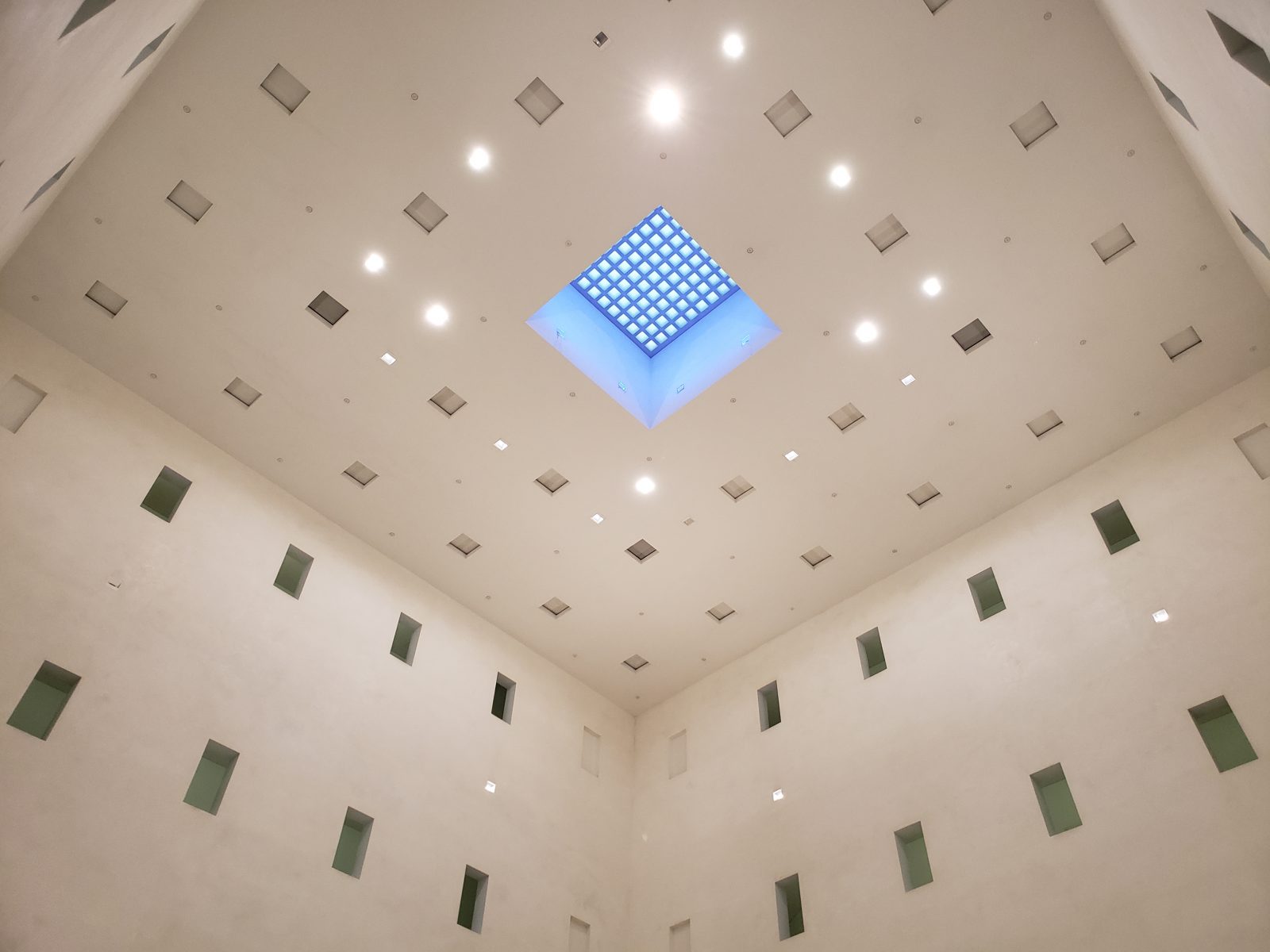
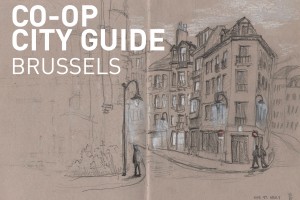

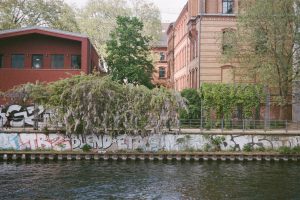
Leave a Reply